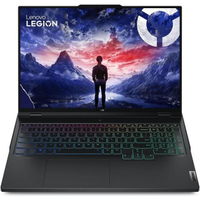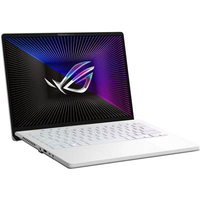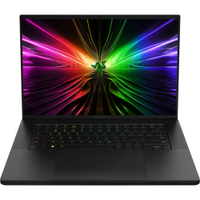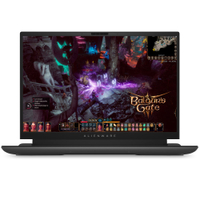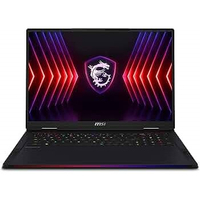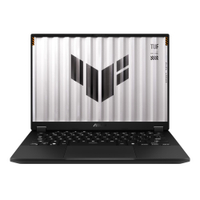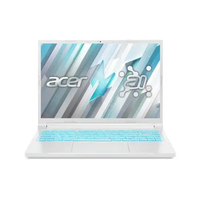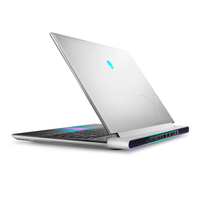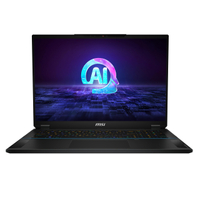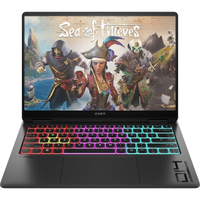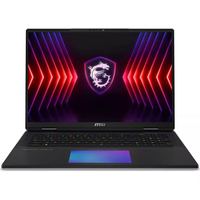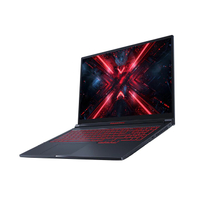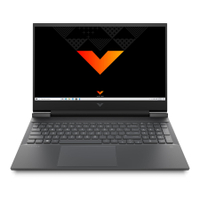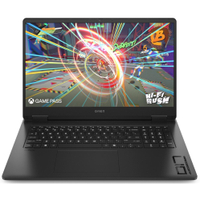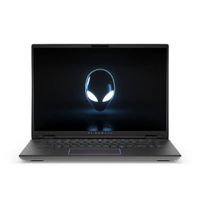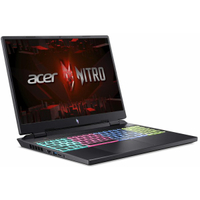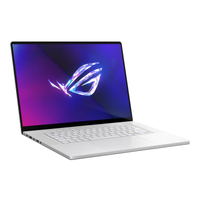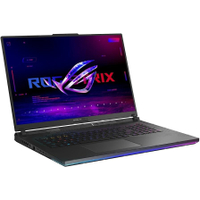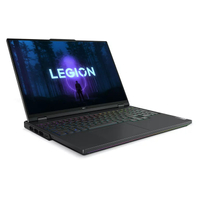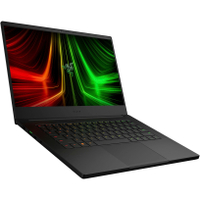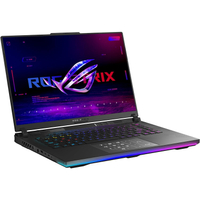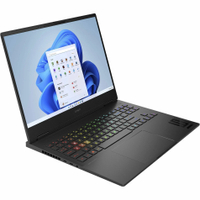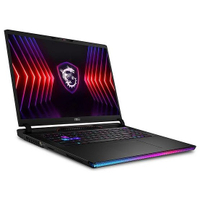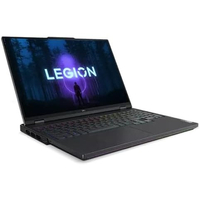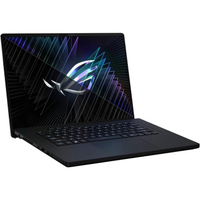The best gaming laptop 2025 - all the latest models compared
I'm rounding up all the best gaming laptops to suit any budget
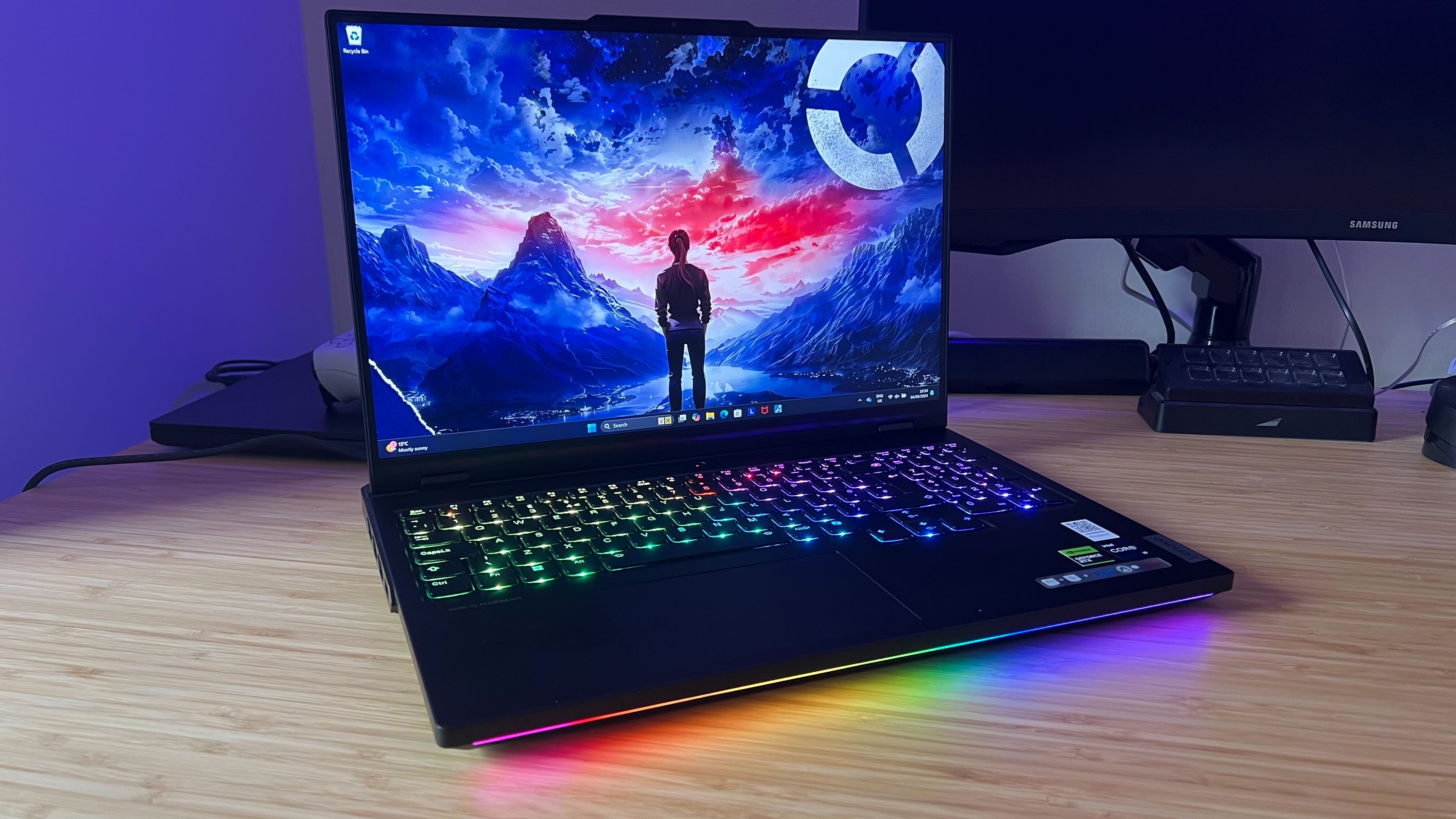
I've just finished reviewing the first RTX 5090 gaming laptop to hit the shelves and, while the new generation isn't quite leaping as far as the move from the RTX 30-Series to the RTX 40-Series, there are certainly plenty of efficiency benefits on their way. The best gaming laptops in 2025 may well look a little different to their previous generation counterparts - if the Blade 16 has taught us anything, it's that form factor and overall quality of life are far greater areas of focus for these machines.
That also means that the best RTX 40-Series gaming laptops are very much still in play this year. Prices are going to be lower than their RTX 50-Series equivalents and value is already looking pretty good.
The best gaming laptop I've tested so far is, overall, the Lenovo Legion Pro 7i Gen 9. It's seriously impressive in its performance and design, offering some fantastic benchmark results while still maintaining a slick and subtle form factor. You'll find all my favorites below, with each rig having passed a series of in-game and dedicated stress-test benchmark processes.
I've also lived, worked, and played with all of these machines for a minimum of two weeks each (and more when I can swing it that way). That means you know each one has been not only play-tested but life-tested along the way. You can check out exactly how we test gaming laptops in our dedicated guide.
The quick list
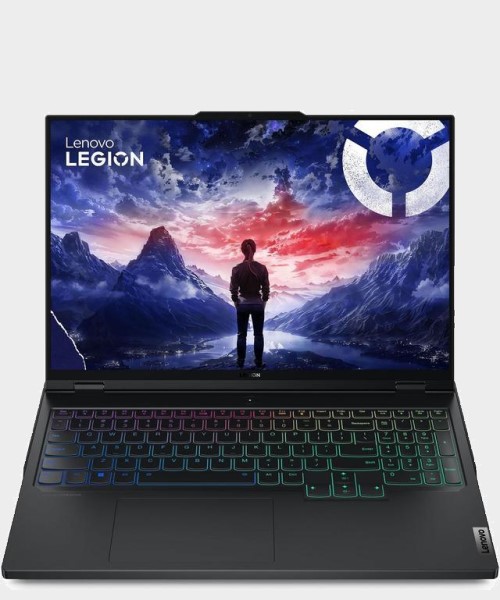
The latest Legion Pro has taken the top spot on the market, boasting excellent performance and a chassis that won't take over your desk.
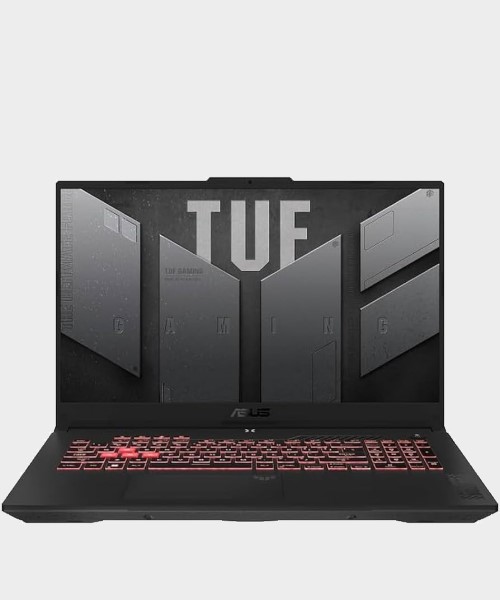
You don't need to spend big on a gaming laptop - especially if you play lighter games. The Asus TUF A15 offers the best price/performance value I've tested so far, and doesn't come in a cheap-feeling chassis either. This is your go-to starter rig.
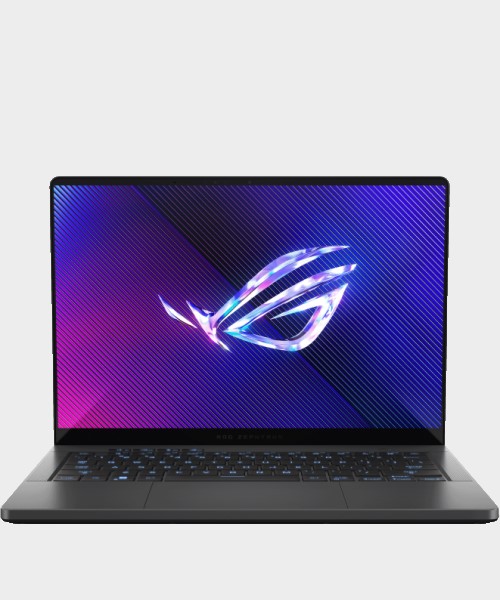
The latest Zephyrus G14 feels more like an ultrabook with its slick design and OLED panel. It's still got gaming chops, though - making it our go-to 14-incher.
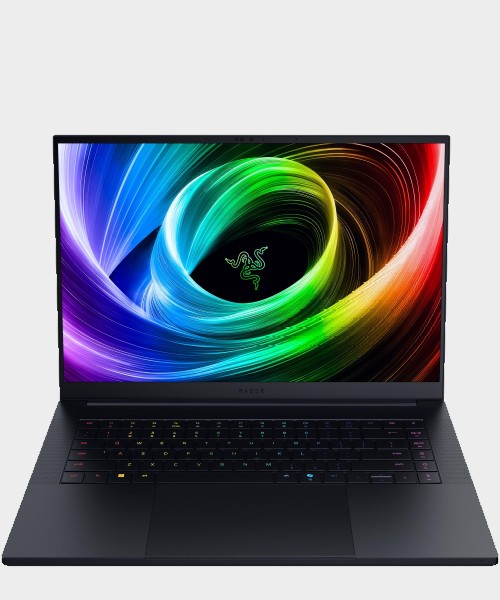
The latest Razer Blade 16 is going to cost you, but if you're looking to splash out on the highest quality 16-inch machine in the business this is where you need to be looking.
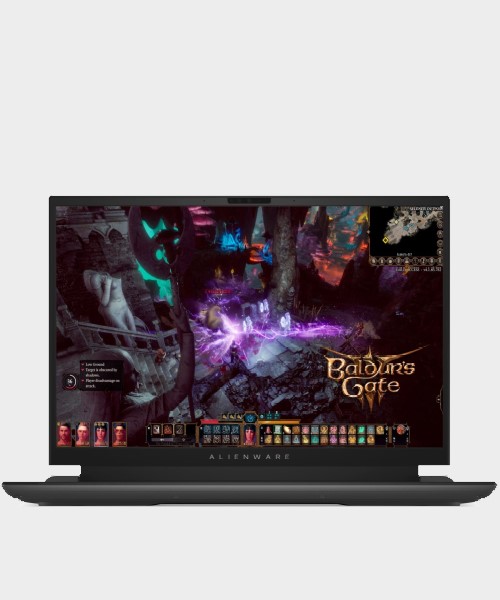
The Alienware M18 walks a fine line. It's a beast but that means it can rev its components to their maximum value - for a fair price to boot.
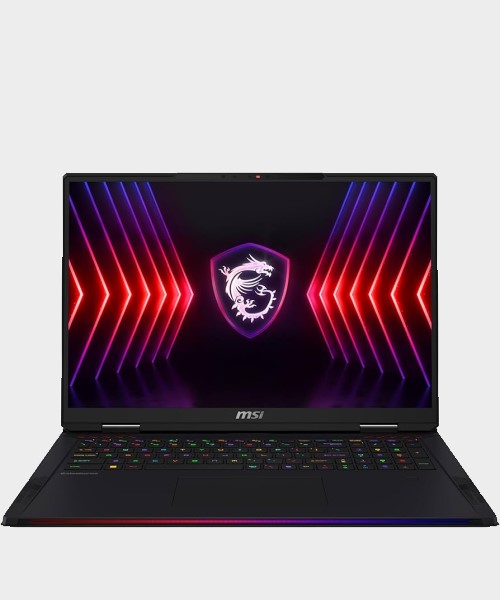
The MSI Raider 18 HX is a beast, with the latest and greatest components throwing out some of the highest benchmark scores we've seen yet.
Show more ↓
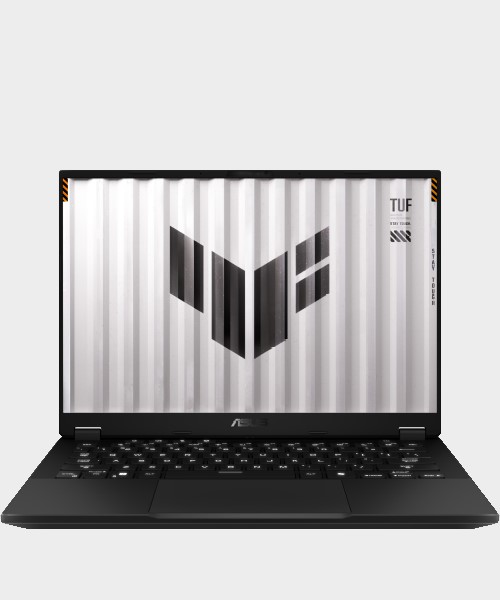
With an incredibly powerful AMD AI processor at the helm, the Asus TUF A14 is slim and light but still offers excellent performance.

I've been obsessed with laptops since I got my first machine that could just about, barely, run The Sims 2. Since then I've been through more gaming laptops than I can count, and - thankfully for my bank balance - have been reviewing these magic machines for over five years at GamesRadar+. While I can certainly appreciate a top of the range set of components, my background as a Deals Editor at our sister site TechRadar has also taught me the importance of value, so I consistently hold a particularly keen eye for user experience, long-term reliability, and the price/performance balancing act.
Recent updates
March 28 - What a week, I've had the 2025 Razer Blade 16 on the test bench, putting the mobile RTX 5090 through its paces. While it's more expensive on the whole, the machine's boosted battery life, much slimmer form factor, and improved keyboard mean it steals the top spot in the 16-inch category from its predecessor. While the efficiency-minded RTX 5090 might not be for those chasing the highest native framerates possible, this is one of the best gaming laptops I've tested overall so far and it's very much deserving of a spot on this list.
The best gaming laptop overall

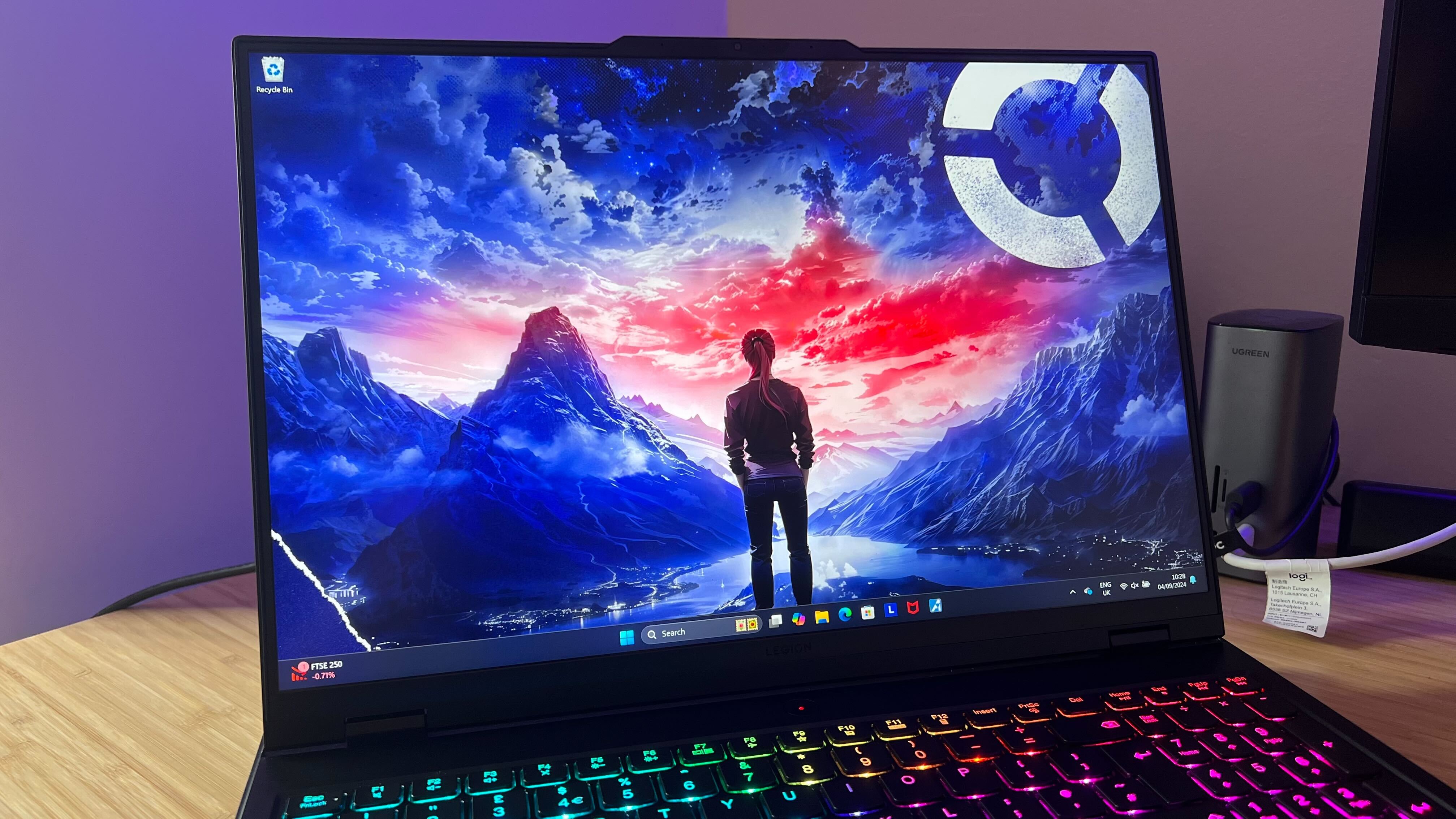
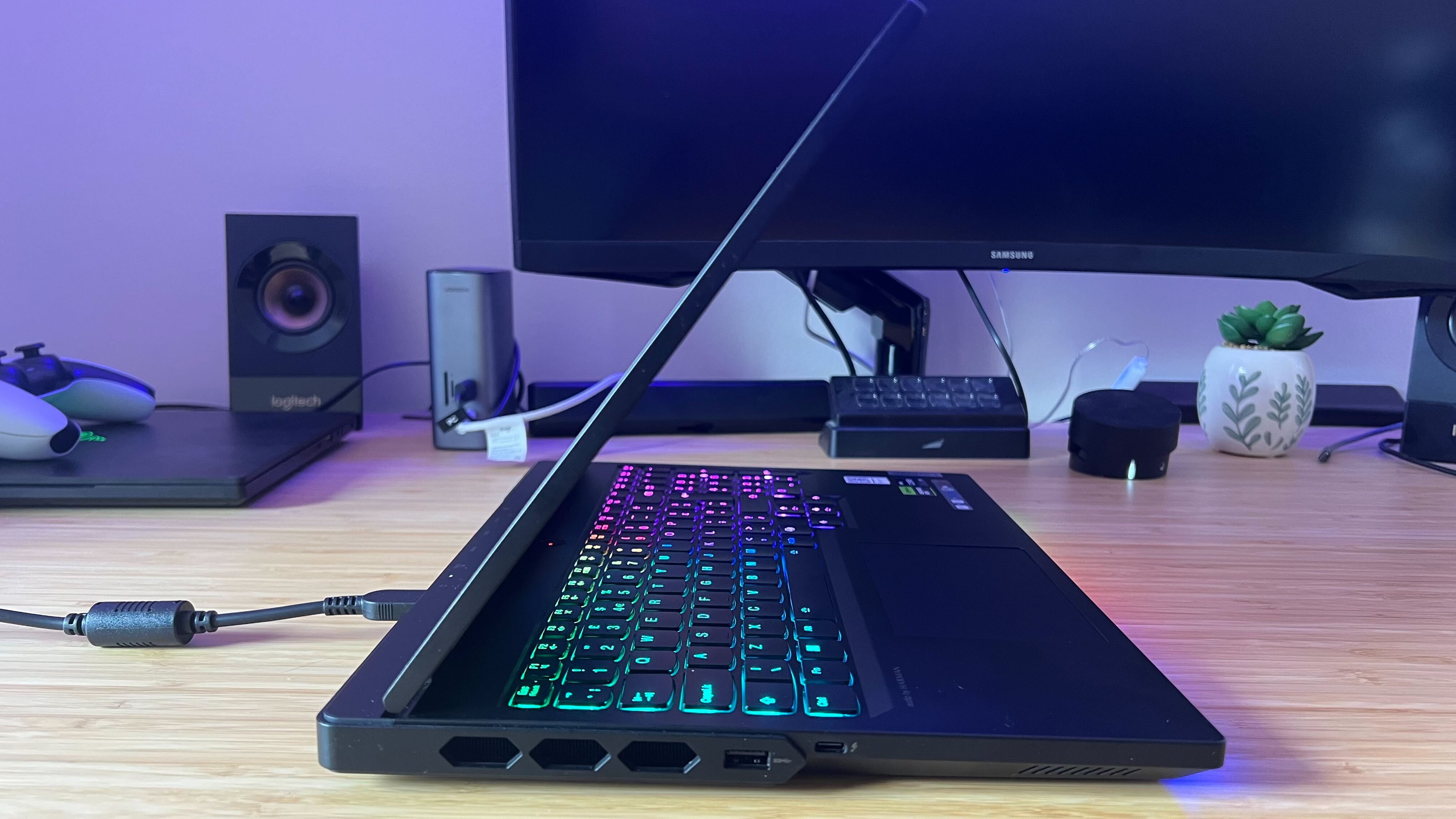
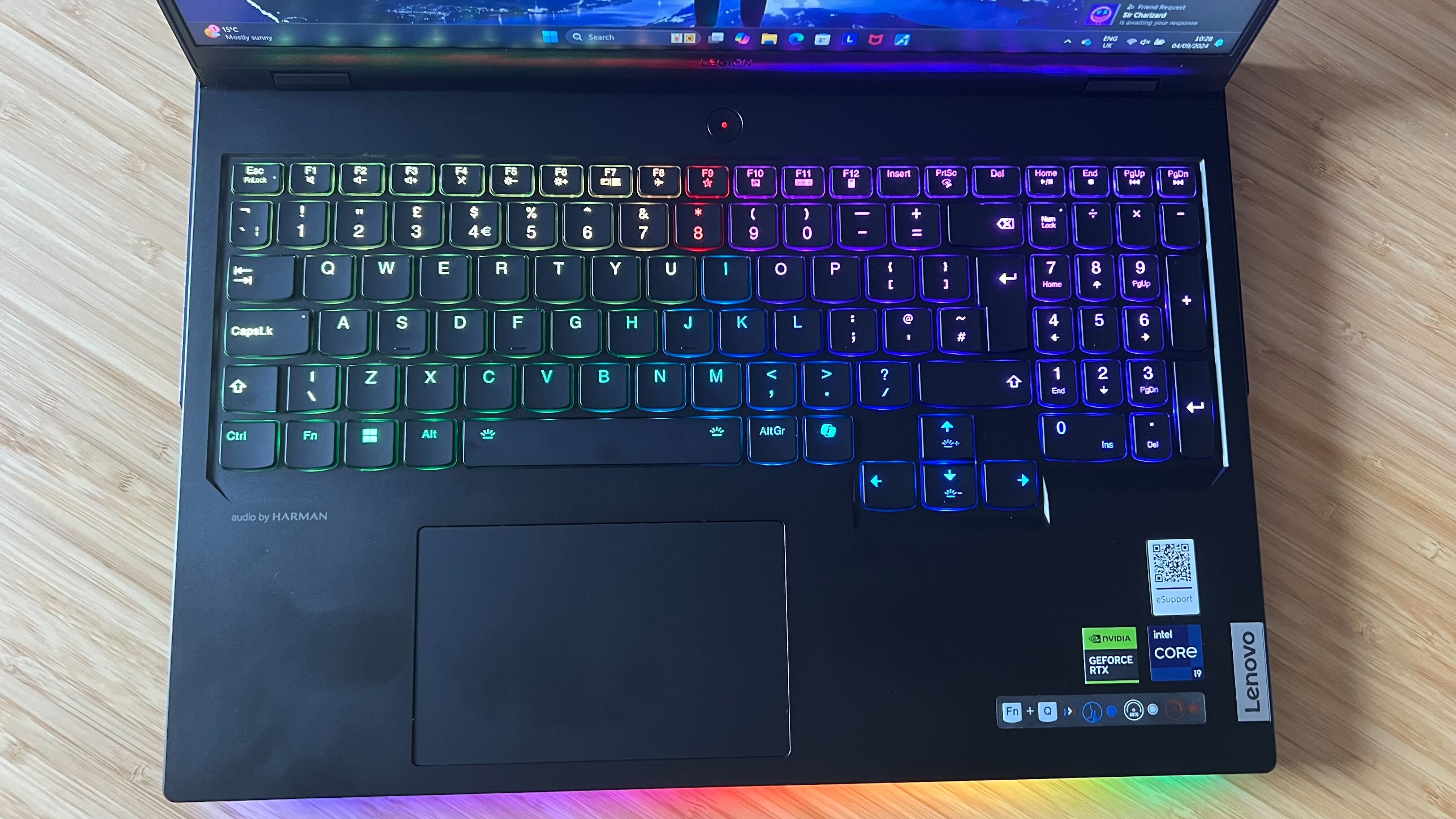
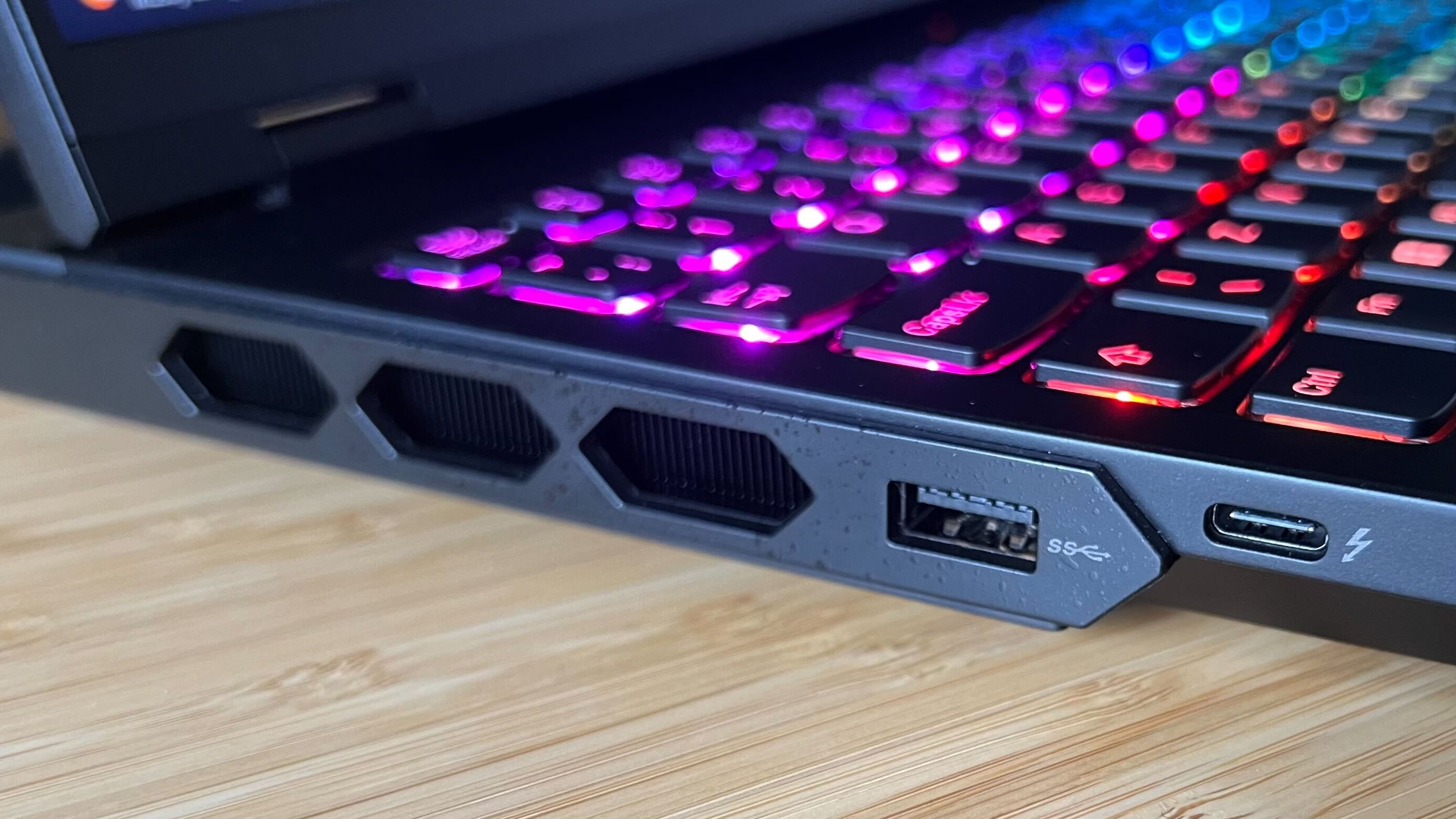
Specifications
Reasons to buy
Reasons to avoid
My favorite configuration
Lenovo Legion Pro 7i Gen 9 | RTX 4080 | Intel i9-14900HX | Available at Lenovo
You can bump things up to a full RTX 4090 if you want to fully future-proof yourself, but the RTX 4080 is going to be keeping your framerates high for years to come and costs considerably less. Instead, I'd recommend taking the leap to 32GB RAM and a 2TB SSD for a fully fleshed out system.
The Lenovo Legion Pro 7i Gen 9 has kicked the Asus ROG Strix Scar 16 off the top spot. Both are high-end 16-inch gaming laptops configurable up to an RTX 4090 but the boosted performance, slicker chassis, and improved design of the Legion Pro makes it the better buy.
✅ You want the best of both worlds: You're usually sacrificing performance to pick up a slimline machine and while the Legion Pro certainly isn't skinny its design means it doesn't look or feel so imposing on a desk.
✅ You're also a content creator: While it's not a 4K panel, the color accuracy and contrast of the Legion Pro's display is a sight to behold. Covering all the gamuts you'll need, this is a perfect fit for multi-taskers.
✅ You're investing long-term: The price is certainly high, but with top of the range components under the hood this is a gaming laptop that will see you through new releases for years to come.
❌ You don't need 100+ framerates: If you just play less demanding games, or you're happy spending less and sticking closer to 60fps then there are far cheaper options out there.
❌ You use particularly fast peripherals: The Legion Pro features older USB-A 3.2 Gen 1 ports, which isn't going to make much of a difference for the vast majority of players. However, if all your peripherals use newer, faster, connections it might be worth looking elsewhere.
Design: There's some kind of magic going on in the Lenovo Legion Pro 7i Gen 9's design. This is a heavy device, weighing in at 2.79kg (more than the Alienware M16 R2, Asus ROG Strix Scar 16, and Razer Blade 16), but it doesn't invade your backpack in quite the same way as chunkier models. The front edge is tapered, with only the rear I/O panel and a little of the sides sitting at full width. That gives the illusion of a much more svelt machine than the Scar 16 while still packing the power of a full chonk - something that served it particularly well in an RTX 4080 matchup against the skinnier MSI Stealth 18 AI Studio.
Actual build construction is fantastic as well, with an aluminum base and a skinny lid. Despite its minute size, this top panel holds up extremely well - only ever wobbling when being lowered slightly and snapping straight into place when opened with one hand. There's also very little flex to this piece, whereas I would have expected a far bendier experience. You've got all the RGB you can want, with per-key illumination on the full-sized keyboard and a neat strip of LEDs along the front (I personally prefer this more refined effect than the blaring grill of the ROG Strix Scar 16). You're not getting the sleek feel and additional RGB lighting of the Alienware x16 R2, but the extra heft does carry its own value in the features department.
Features: The main upgrade this year, like many other gaming laptops, comes to the Legion Pro's screen. It's still a 16-inch QHD+ 240Hz panel, but Lenovo has boosted its color handling, pushing the IPS display to cover 100% of the DCI-P3 color gamut as well as the sRGB range already offered by the previous model. In the real world, that means far more definition between your colors, with games popping off the screen and a particularly immersive vividity to both brighter and darker scenes. It's a far better display than the darker and sometimes washed out Alienware x16 R2.
Not only that, but the keyboard underneath that screen is one of the best I've tested, offering a super springy feel and a tactile, clean response. Your port selection is pretty standard fare, with two USB-C options (both offering power delivery and Display Port 1.4), one being Thunderbolt 4. However the four USB-A connections on offer are all USB 3.2 Gen 1. That's not going to make much of a difference to the majority of players' peripherals, but if you're using faster, more recent gadgets you might get a slower transfer rate on paper.
Performance: The Lenovo Legion Pro 7i consistently performed better than the ROG Strix Scar 16 across synthetic and in-game benchmarks, posting some framerates that gave the (admittedly skinnier) RTX 4090 Razer Blade 16 something to think about. This is a particularly well-engineered device, running in 1080p Ultra settings at between 97fps and 195fps and QHD Ultra taking us to 71fps - 184fps. That puts it at the top of my RTX 4080 comparison pool, sometimes even overtaking far more expensive RTX 4090 configurations.
Verdict: The Lenovo Legion Pro 7i can top the performance charts in its price range, depending on the game, and does it all in a chassis that looks and feels more streamlined than that of the Strix Scar 16. It sits in the middle of the price range, but punches well above that position in both performance and quality of life features and that's a rare beast indeed.
CES 2025: Lenovo has announced a new version of the Legion Pro 7i at CES, with the 10th Gen model bringing Intel Core Ultra HX processors and GPUs ranging up to an RTX 5090. The new device will also benefit from a new chassis design and OLED display options, WiFi 7, and swappable keycaps. The new model will be available from March 2025, from $2,399.
Read more: Lenovo Legion Pro 7i Gen 9 review
The best cheap gaming laptop
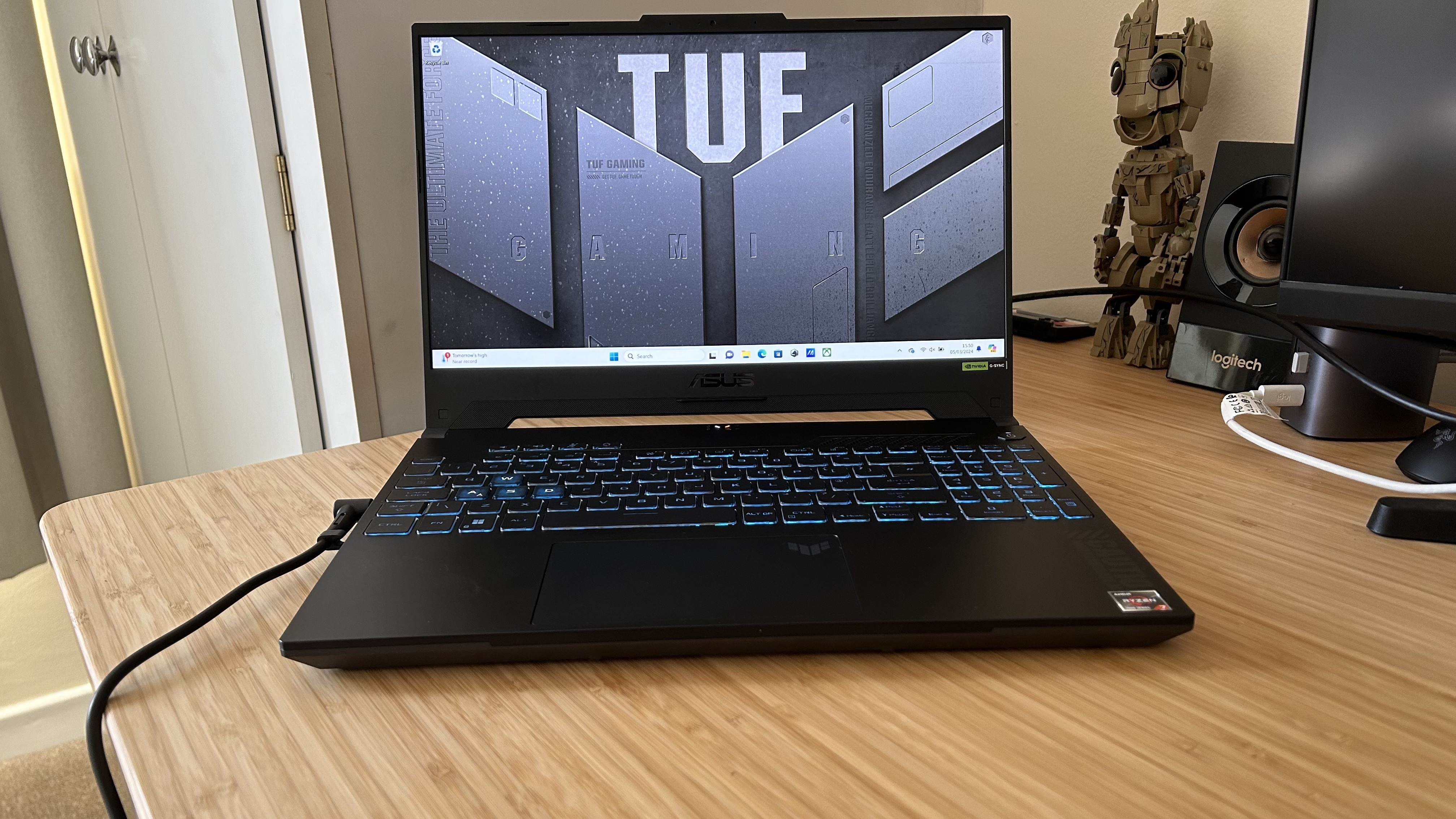
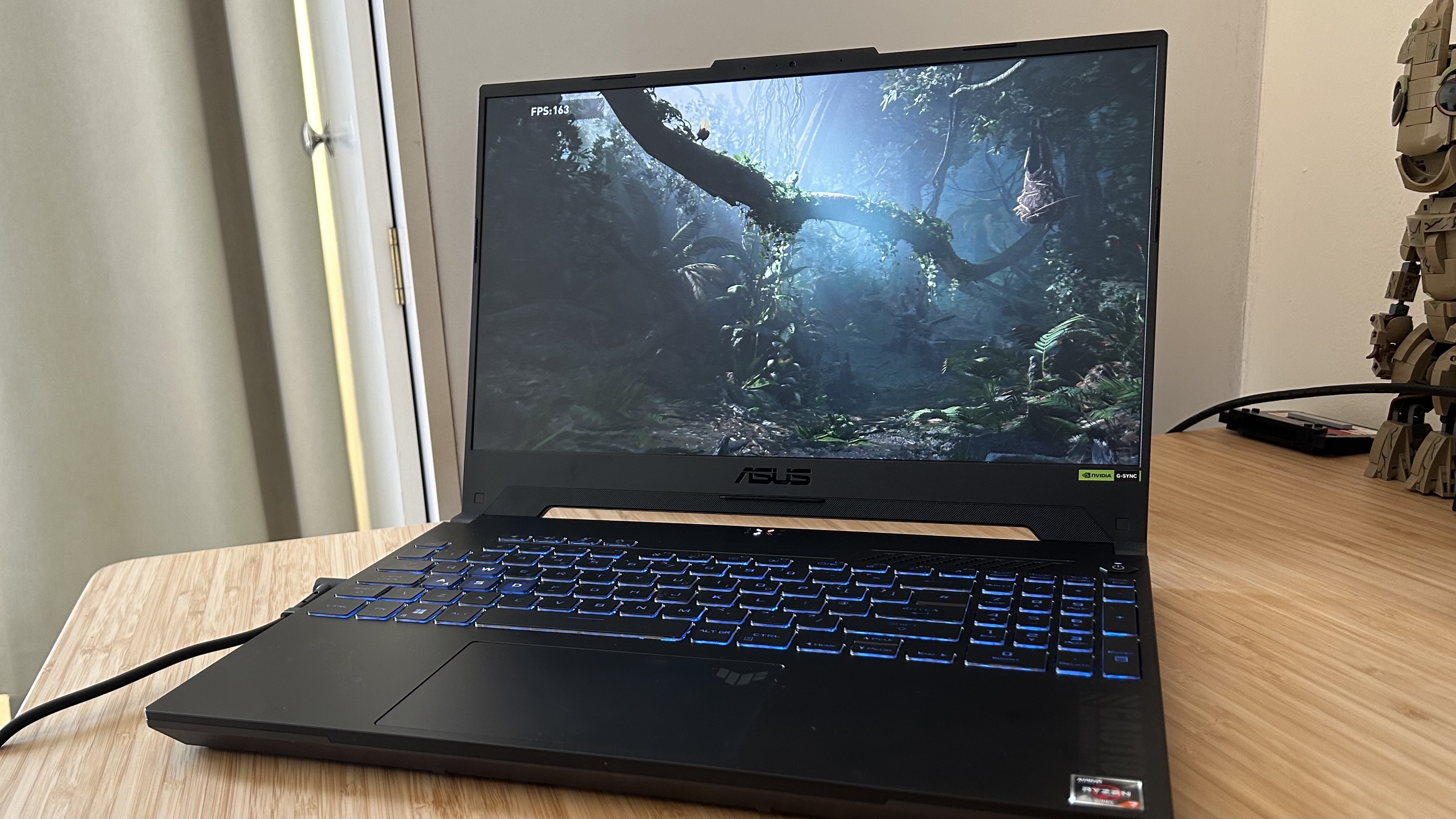
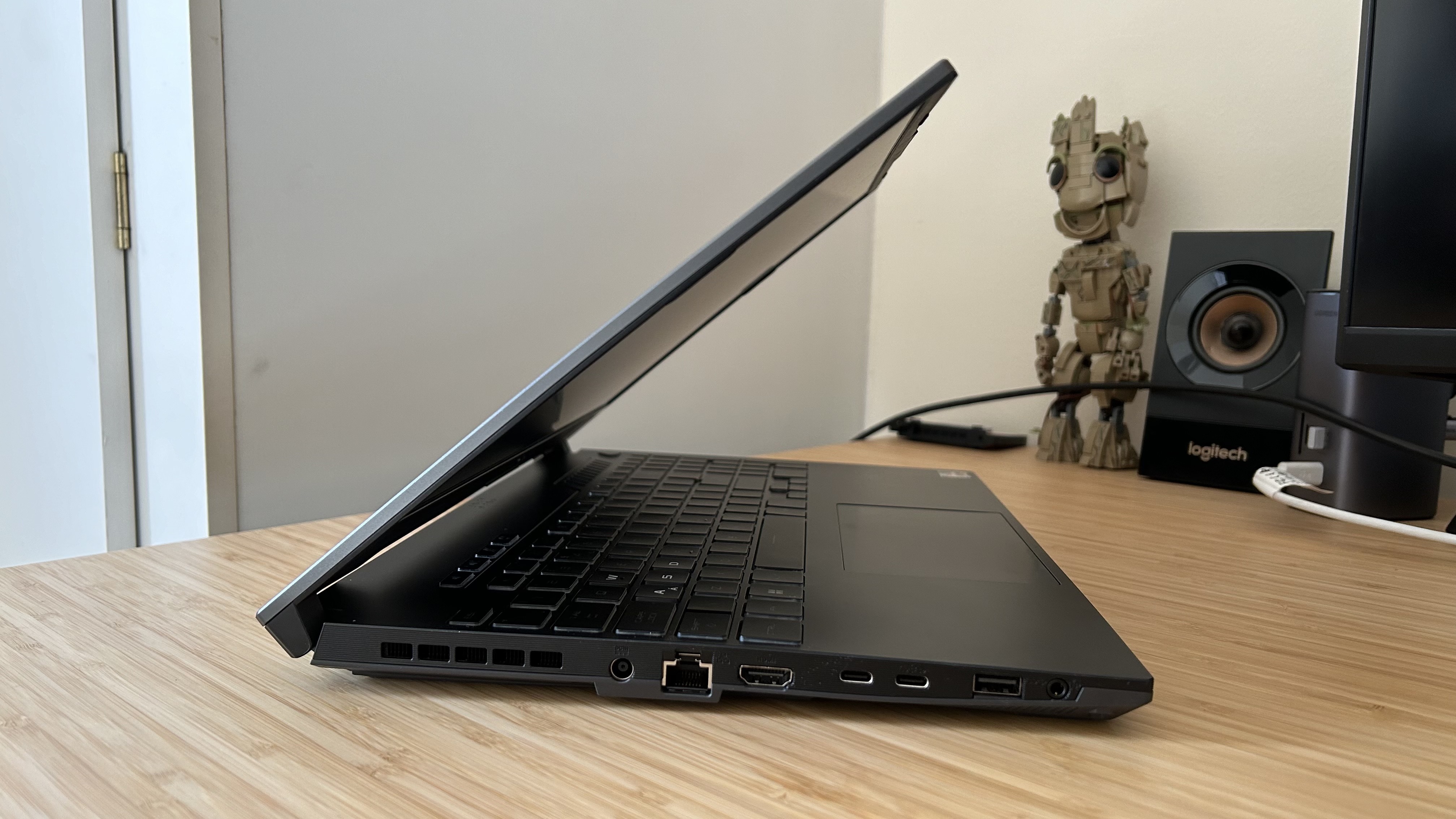
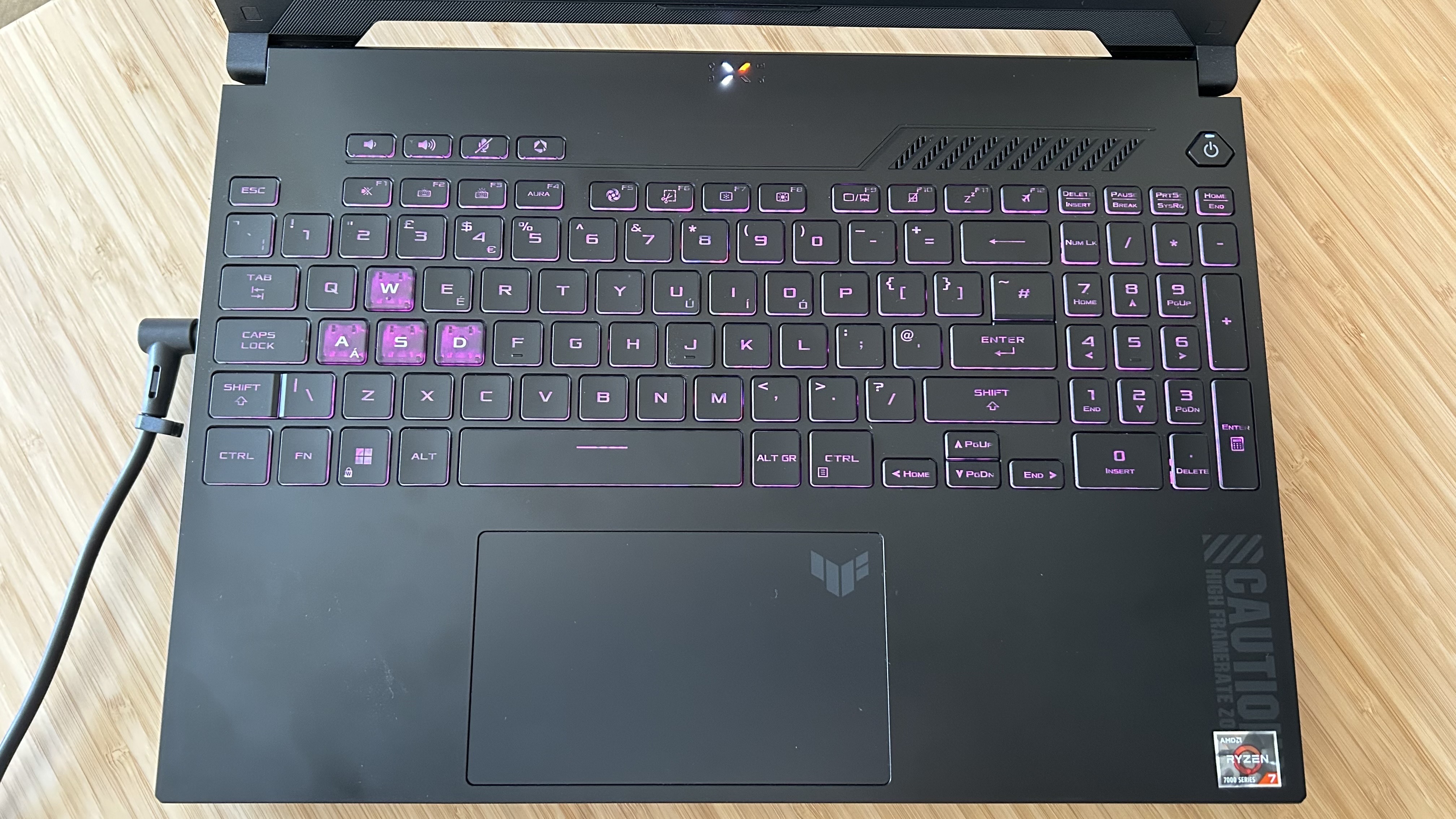
Specifications
Reasons to buy
Reasons to avoid
My favorite configuration:
Asus TUF A15 | RTX 4050 | AMD Ryzen 7 7735HS | Available at Asus
If you're spending as little as possible, this RTX 4050 configuration will see you through. You'll still be able to post some more than playable framerates with this model, while benefitting from a 144Hz display and Ryzen 7 processor.
The Asus TUF A15 has long been held as a staple among budget gaming laptops, but the latest model has cemented its position as one of the greats. This is a cheaper rig, so you're making some sacrifices to get those latest components in the price tag. However, the performance on offer is fantastic value for money as a result.
✅ You prioritize speed over finesse: The 1080p display in here is built to handle speed over the extra details you might find in a 1440p or 1600p screen.
✅ You're happy to crank up the fans: We got our best results from the Turbo Mode power preset which can kick those fans up to give you a tangible boost in performance.
✅ You don't want it to look cheap: The metal lid and simple color scheme makes the A15 look far more premium than its price tag suggests. If you're looking to spend less without that typical budget aesthetic, this is your best bet.
❌ You need a machine for daily work: If you're after a portable machine for daily work out and about, this isn't it. Not only is it chunkier than other ultrabooks at similar prices, but the keyboard and trackpad aren't up to a full day's clacking.
❌ You want to push demanding games to their limits: There's only so much an RTX 4060 or RTX 4070 can do - if you're looking to play next year's biggest Triple-As on max settings we'd recommend something with a little more power.
Design: From the cool gray tones to the metal lid, the Asus TUF A15 looks and feels more premium than it actually is. Yes, the majority of this chassis is plastic, and there are some questionably cringey text stamps on the main body, but it's a slick form factor overall and one that neatly sidesteps the common angular pitfalls of cheaper rigs.
The build quality is secure, with a nicely tightened hinge to the main display and only the expected amount of flex in the keyboard area for a gaming laptop of this price. No, it's not quite as slim as the previous Asus TUF Dash F15 before it (my personal machine for a long time), but it's still a comfortable size - easily backpackable and well below the heavyweights on this list.
Features: Like all good budget gaming laptops, the A15 has everything you need, but doesn't pump too much of your cash into any of its main feature areas. Instead, it saves its value for performance. That means you're getting a pretty standard 1080p 144Hz IPS display (in an older 16:9 form factor that did feel a little restrictive in my testing).
This screen could have benefitted from a few more nits of brightness, but displays its colors with enough contrast and vividity to get by in a more casual context. That still makes it a more immersive panel than you'll find on the HP Victus 16, a similarly priced budget entry. However, it's not quite up to the same heights as the Acer Nitro V 14, which makes particularly good use of its display.
There's also a full-sized keyboard in here - a rarity even in 16-inchers these days - and while it's a little softer than I'd like it still gets the job done. That trackpad isn't going to see you through a work day on the go, though. It's a clunky implementation with unreliable zoning for each click side and a heavy middle section.
Performance: I was impressed with the numbers filing out of the A15's benchmarks. It actually scored higher in Time Spy and Fire Strike than a similarly specced HP Omen Transcend 16 (worth about $600 more) and managed to carry me through demanding titles like Returnal and Hitman 3 without once dropping even close to 60fps. Considering you're spending far less than usual and still scoring three-figure framerates in Shadow of the Tomb Raider this is an absolute win.
Verdict: If you're going all in on performance and your budget doesn't stretch to the big dogs in this race, the Asus TUF A15 is a must-see. It's one of the cheapest machines I've tested so far and I've come away surprised by the performance on offer as well as the form factor and design. You are making some sacrifices to get there, but at this price point they're all worthwhile.
Read more: Asus TUF A15 review
The best 14-inch gaming laptop
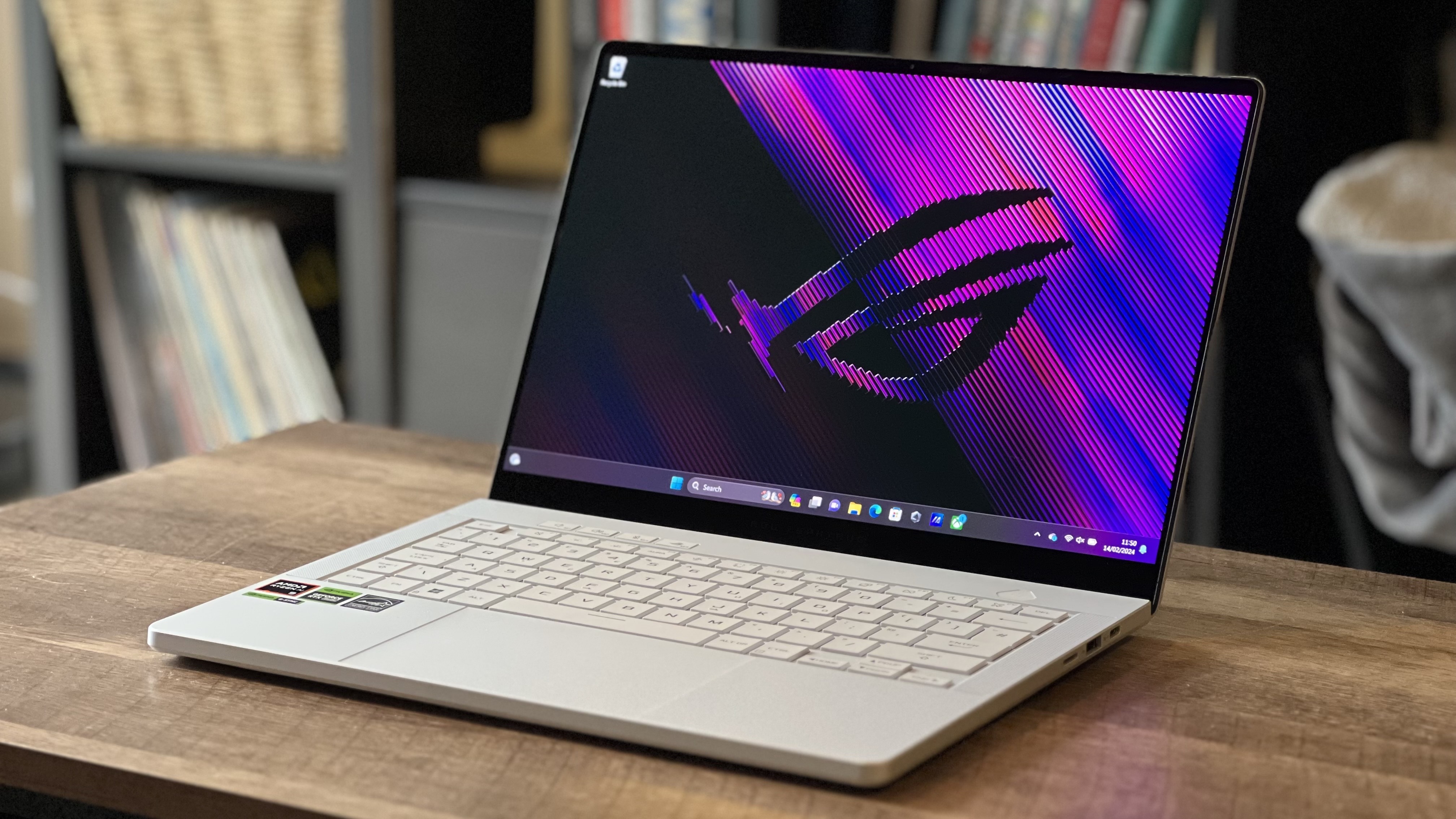
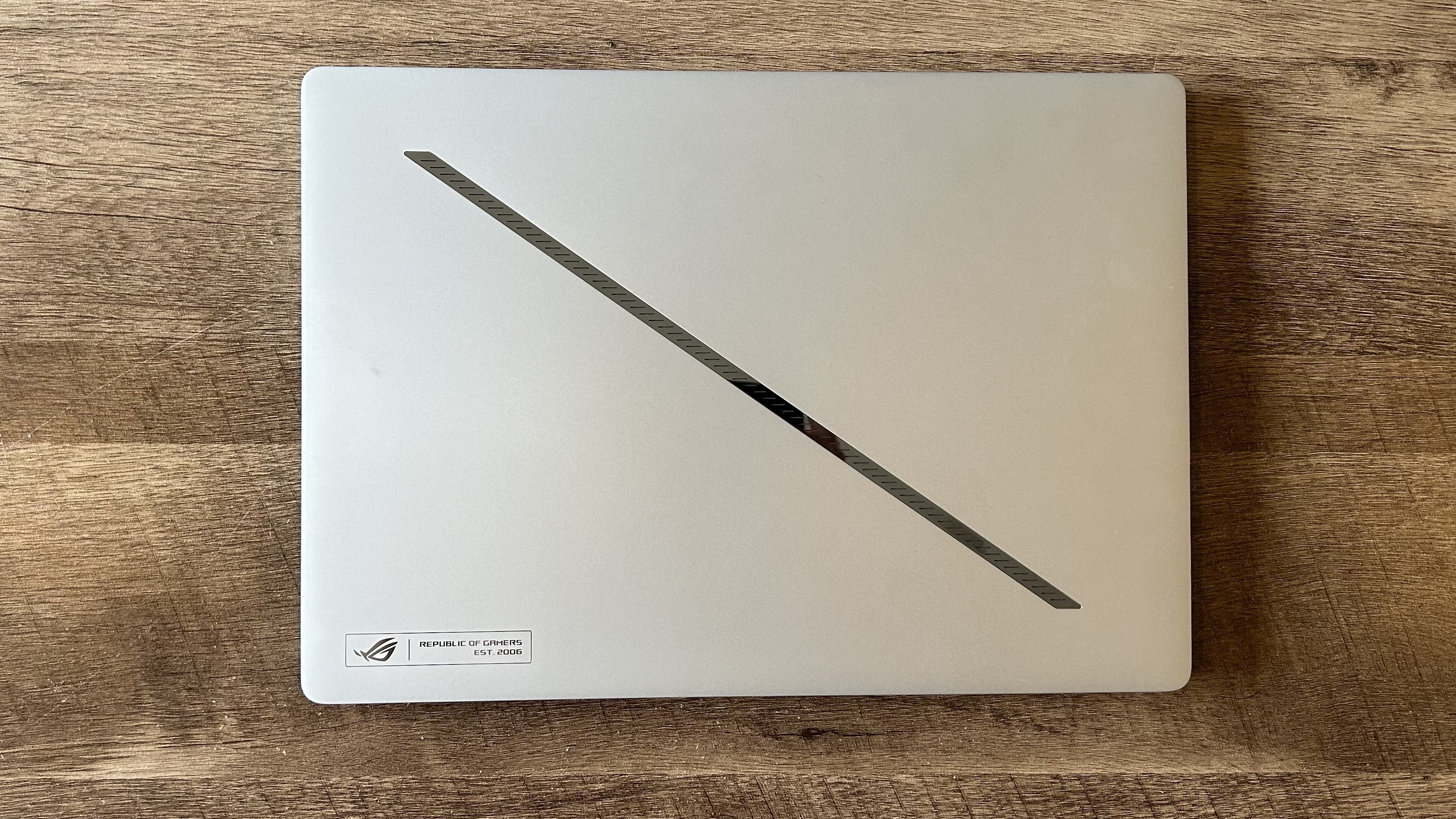
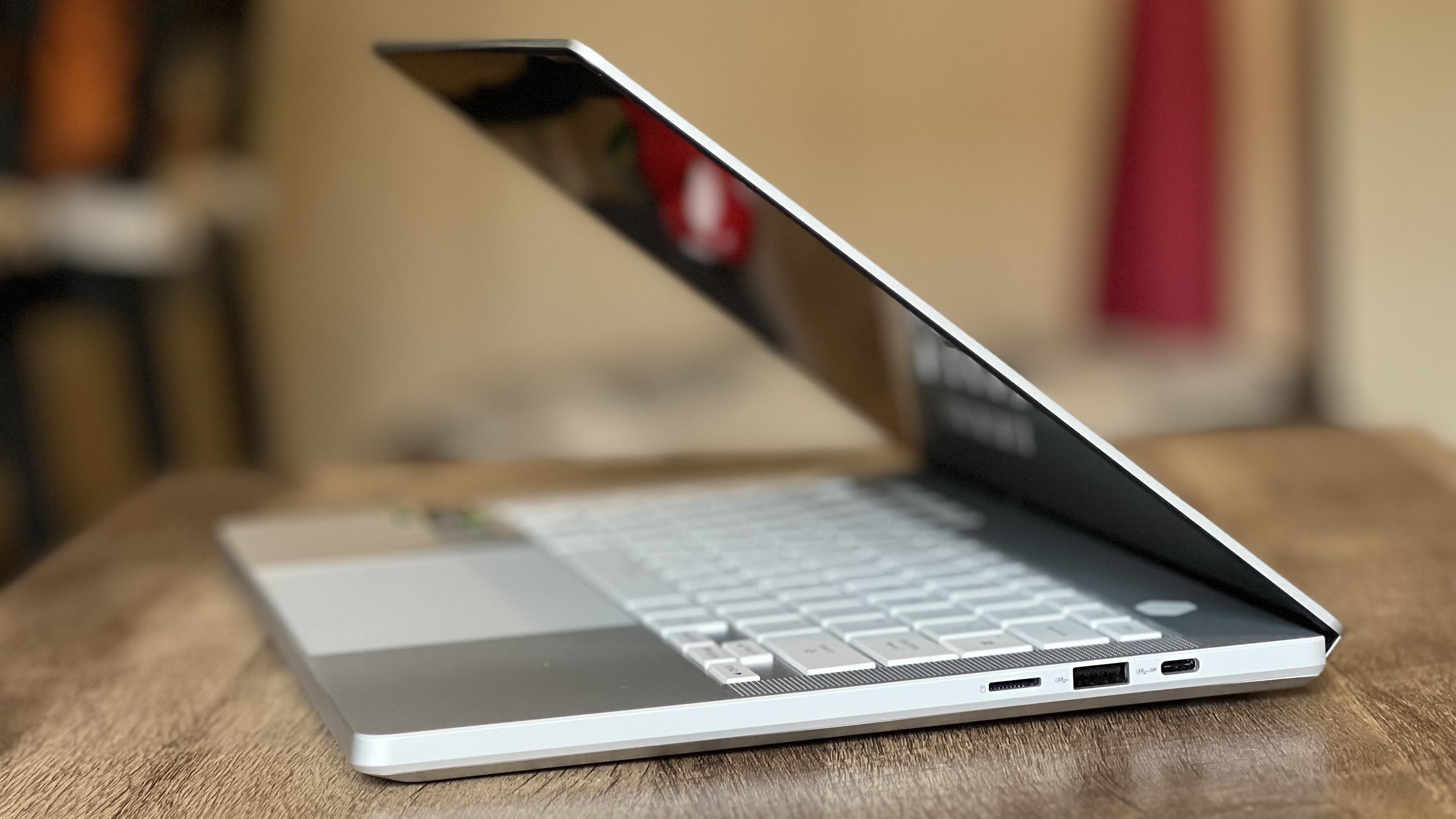
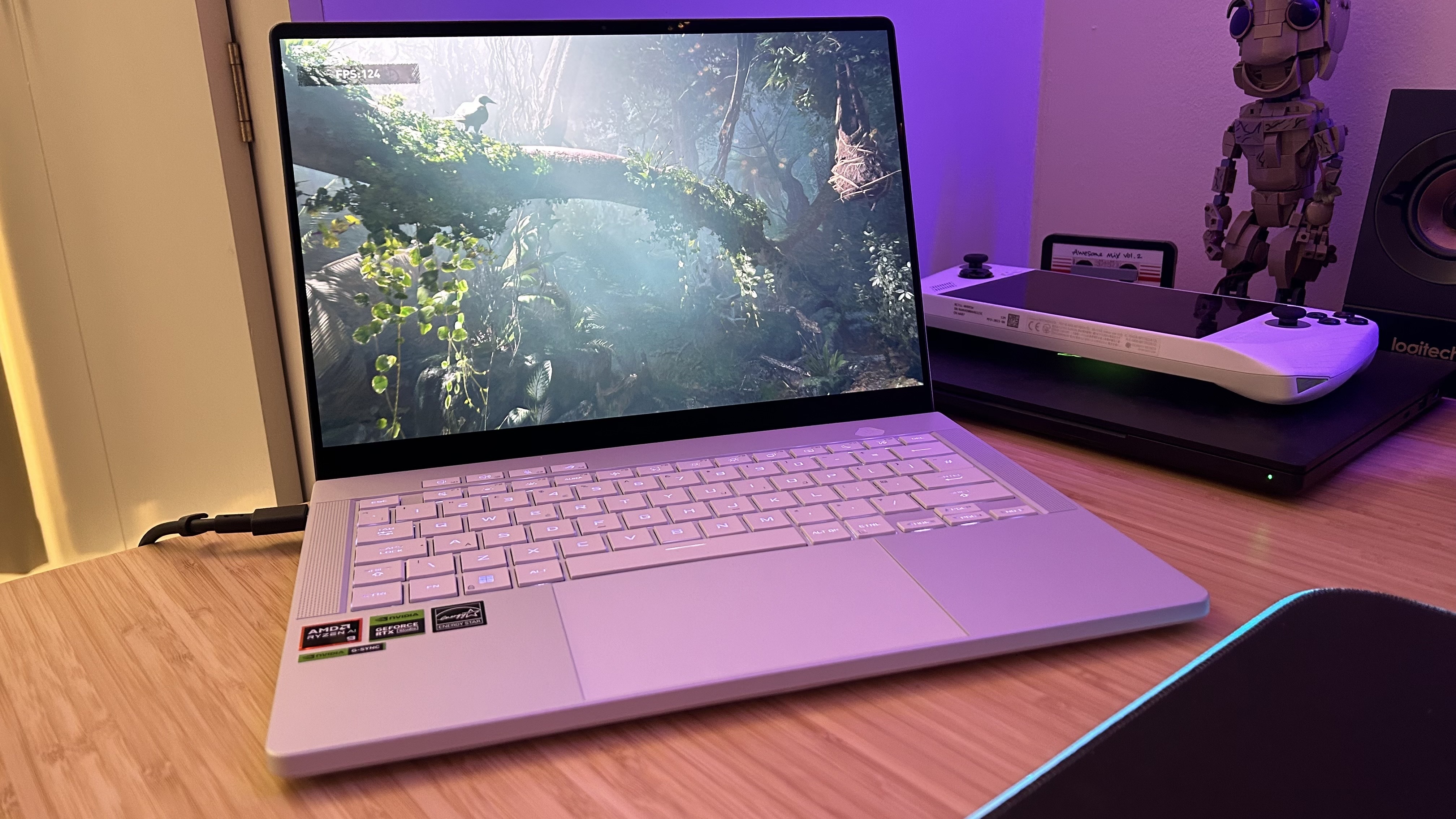
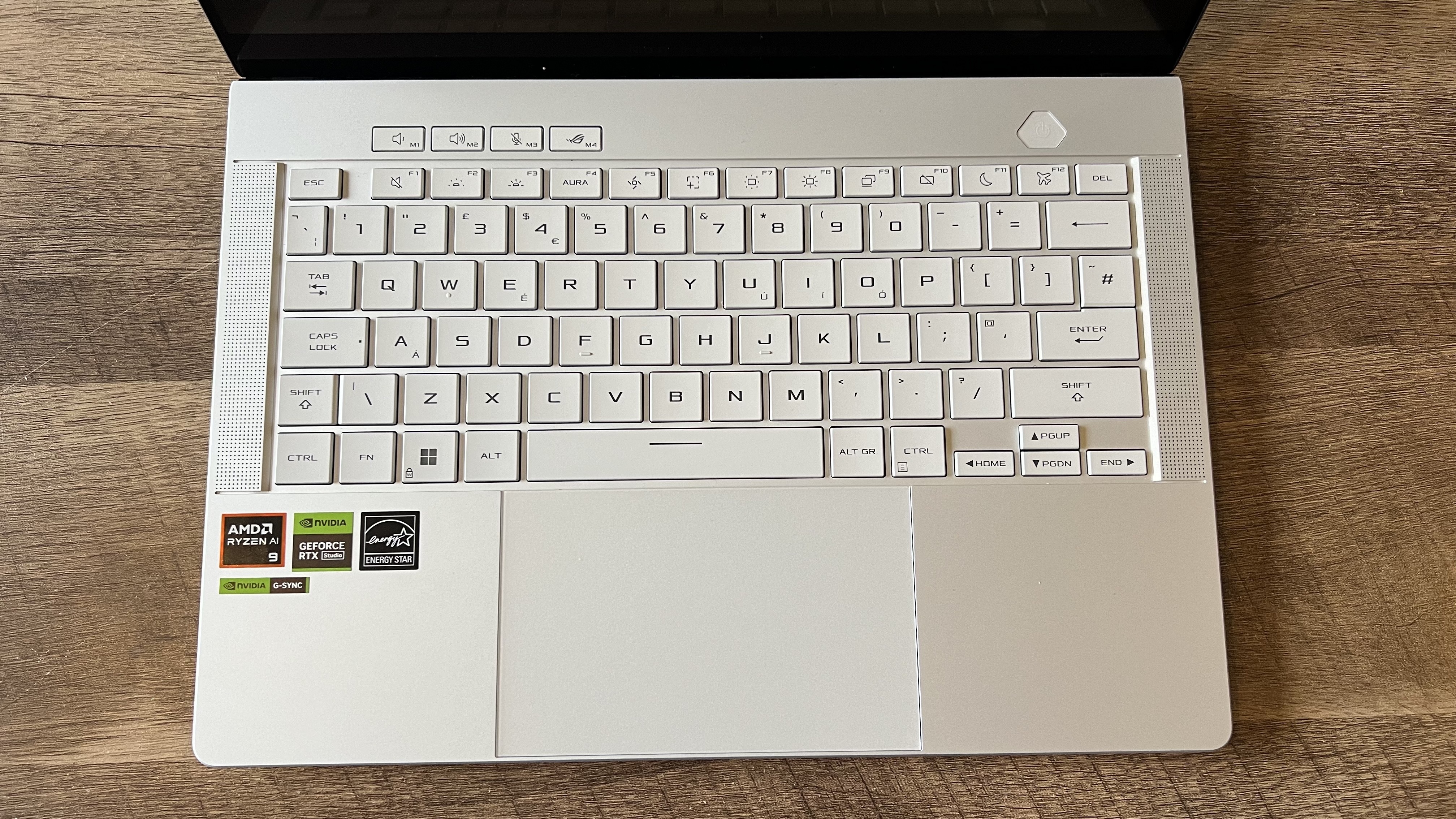
Specifications
Reasons to buy
Reasons to avoid
My favorite configuration:
Asus ROG Zephyrus G14 | RTX 4070 | AMD Ryzen 9 8945HS | Available at Asus
You don't get a choice in your CPU here, but I'd go to the top of the pile for that RTX 4070 GPU. Considering the slimline form factor you'll need this graphical grunt to get the most out of your games now and in the future.
The 2024 Asus ROG Zephyrus G14 changed the game again, adding a glorious OLED display and cutting its top end components from the lineup to achieve a more ultrabook-oriented slimline design. This is a masterpiece for those after the best possible experience at the intersection between power and portability.
✅You travel regularly with your laptop: Its 14-inch form factor is the giveaway here, but the G14 is particularly easy to transport thanks to its light weight and sturdy design.
✅Screen quality is a priority: That OLED panel is unmatched at the moment, offering an incredible viewing experience across both games and movies.
✅ You want a subtle aesthetic: The more refined aesthetic means you've got a gaming laptop that won't stand out from high-end ultrabook options. Think MacBook but with an RTX 4070.
❌ You're chasing framerates: The lack of RTX 4080 and RTX 4090 configuration options means you're not going to beat more high-end specs in the framerate department.
❌ You want a desktop replacement: The G14 is designed to go out and about with you - if you don't mind a larger machine you can spend less and keep it docked at home.
Design: Asus has done away with its iconic LED matrix lid, and instead opted for a much cleaner (and personally preferable for this reviewer) single diagonal stripe. Alongside a new unibody CNC milled aluminum chassis, MacBook Pro-esque light gray, and slimline base, this is a gaming laptop designed to fit in with high end ultrabooks. Dropping bigger components like the RTX 4080 and RTX 4090 from its lineup means the G14 is now one of the lightest rigs on the market at just 1.5kg, all while still retaining a particularly durable form factor.
Features: I'll have to kick off with that display. Asus partnered with Samsung for this OLED panel and the results are incredible. Everything leaps off the screen, from simple developer logos on game boot to the frenzied colors of Cyberpunk 2077. It's a little slower in the refresh rate department, but in everyday play the incredible color contrast and super vivid effect overall made for an excellent experience.
Those specs have taken a slight hit this year. The 8000 Series Ryzen 9 processor is a marginal upgrade from 2023's model, and GPUs now start at RTX 4050s and cap out at an RTX 4070. That means the overall output is going to be lower, traded out for a more slimline build.
Performance: No, the 2024 Asus ROG Zephyrus G14 isn't going to perform as well as an RTX 4090 model from the previous generation. But with that excellent screen and super slick form factor it doesn't necessarily need to. The RTX 4070 in my testing device was more than capable of staying at over 100fps at 1080p in most games, and often held that position in QHD+ as well. Performance here is on par with a similarly specced Razer Blade 14, though for a lower price, with a notable improvement further up the resolution scale.
Asus is taking the Zephyrus G14 beyond its gaming roots
Asus ROG Zephyrus G14 review
Verdict: The Zephyrus G14 is the best 14-inch gaming laptop I've had my hands on so far, and 2024's iteration continues this tradition of pairing performance with outstanding portability. It's not going to reach the framerate highs of a higher powered device but with a gorgeous OLED panel and a fantastic form factor it's going to see much more use in everyday life.
CES 2025: A new Asus ROG Zephyrus G14 made its debut at CES this year, with the 2025 model bumping its specs back up the scale. The latest device is configurable with up to an RTX 5080 GPU, a major improvement over last year's RTX 4070 offering. However, it will also boast AMD's Ryzen AI 9 HX 370 processor, a super efficiency CPU I originally fell in love with while reviewing the Asus TUF A14. As of March 2025 we're still waiting for an official price and release date.
Read more: 2024 Asus ROG Zephyrus G14 review
The best 16-inch gaming laptop
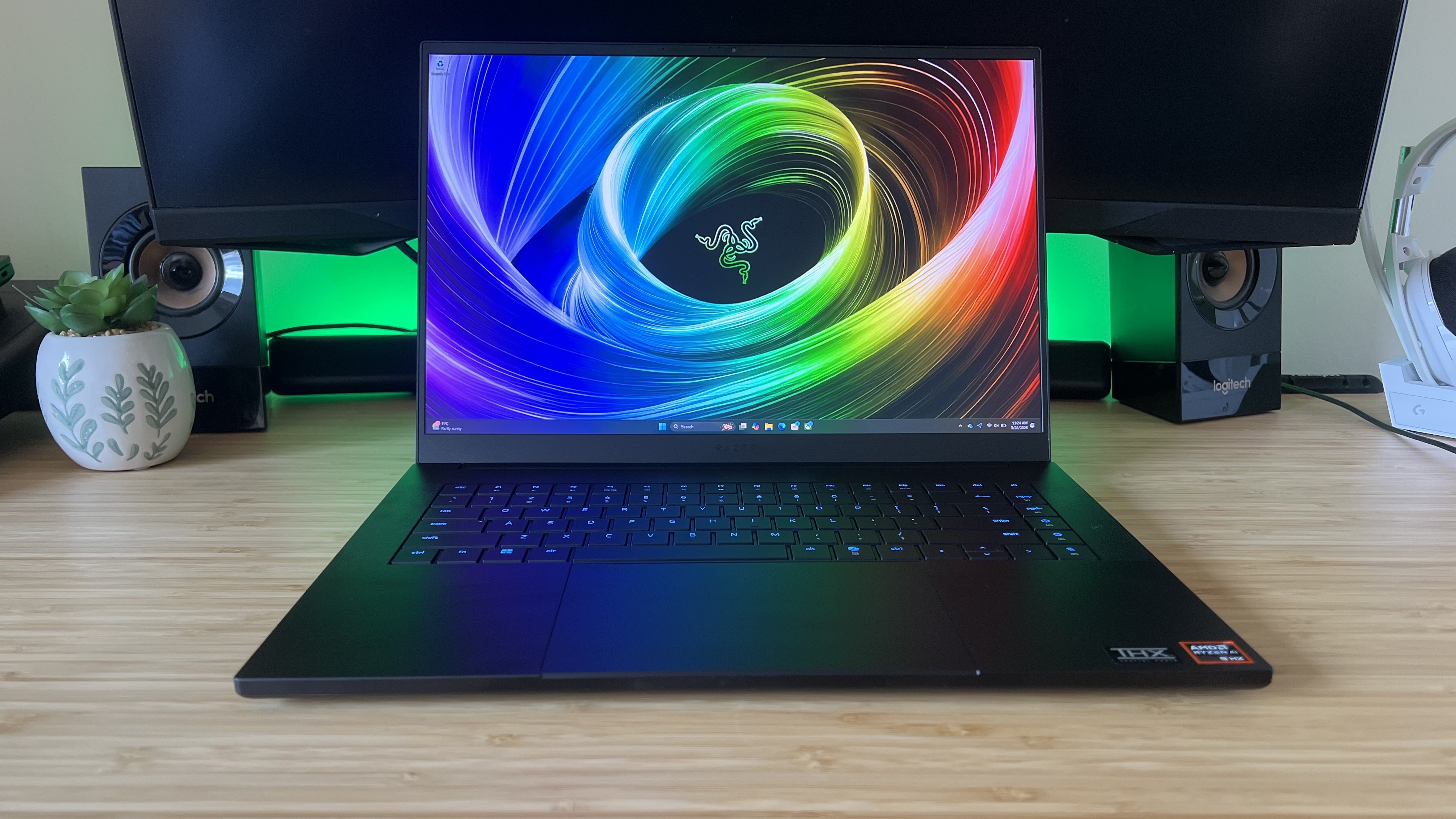
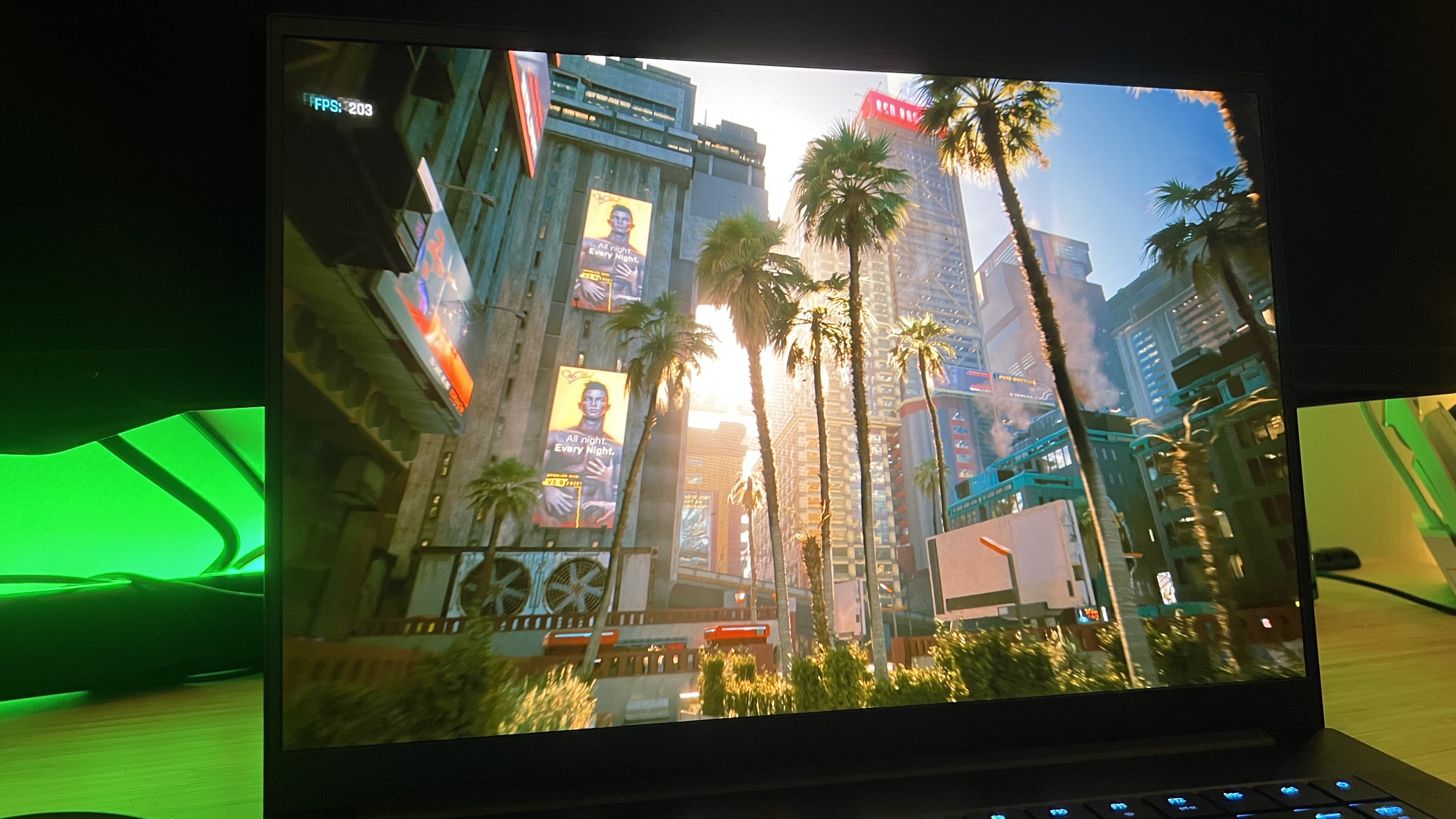
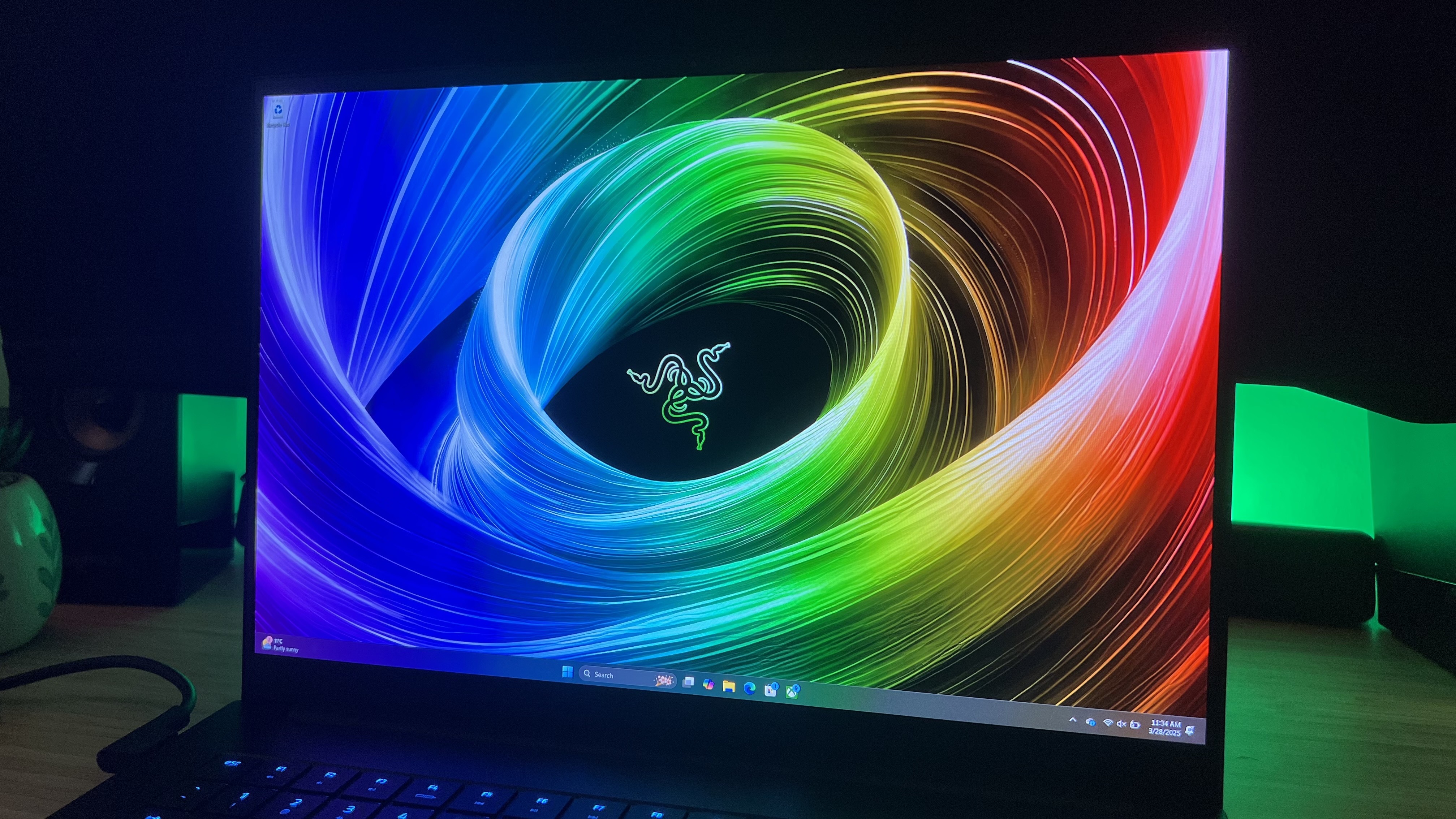
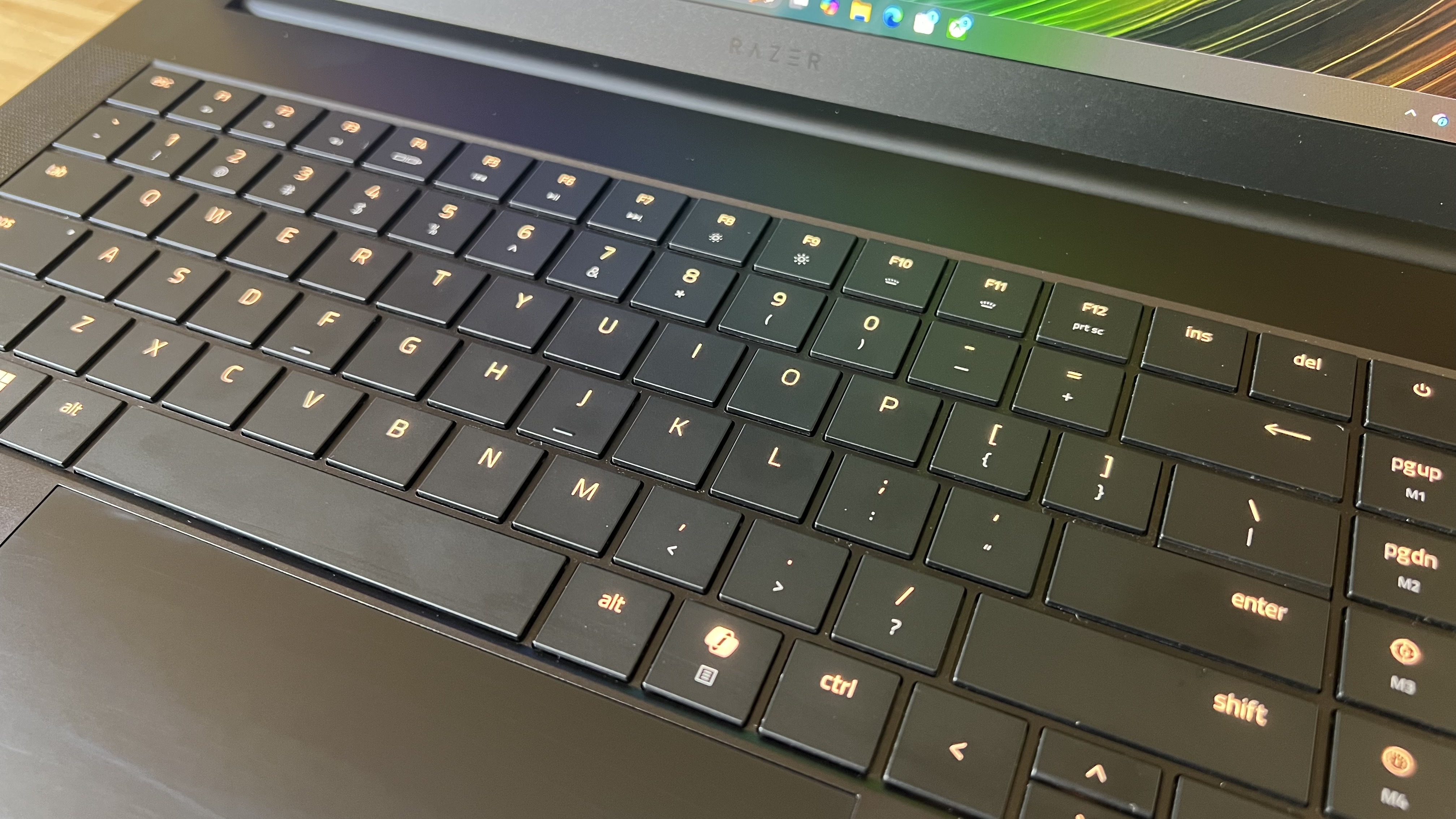
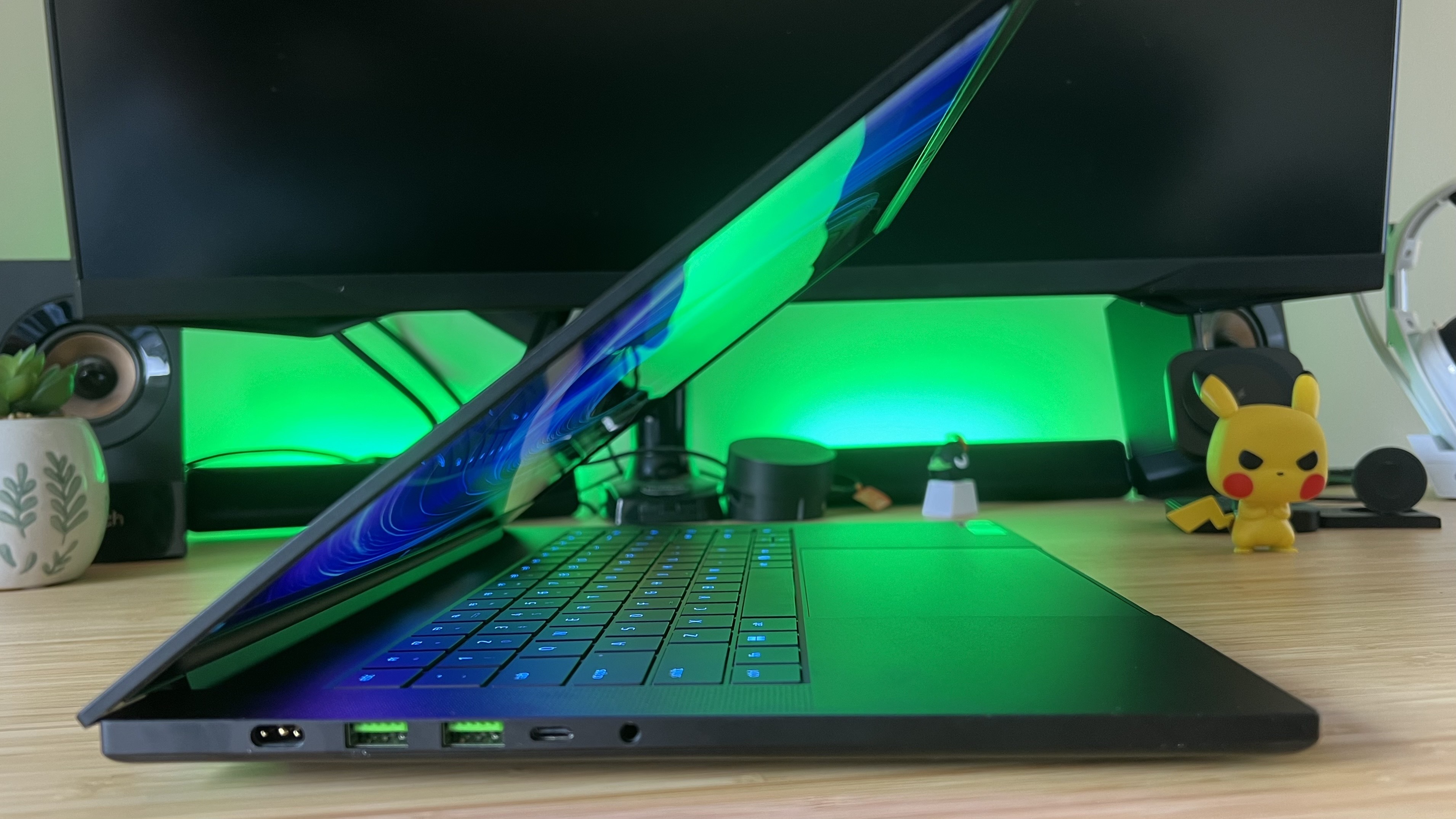
Specifications
Reasons to buy
Reasons to avoid
My favorite configuration:
Razer Blade 16 | AMD Ryzen AI 9 365 | RTX 5070 Ti | Available at Razer
With Nvidia's DLSS at the helm, it's the cheaper configurations of the Razer Blade 16 that make the most sense. You're not getting as much raw horsepower out of this rig, but considering an RTX 4090 configuration comes in at over $4,000 this is where most players will be happiest.
The latest 2025 Razer Blade 16 is certainly making a statement. It's slimmer and lighter, but also slightly more expensive than the previous generation - and that was already an eye-watering price tag. This is one for those investing in the quality of life of their gaming laptop - if you want the best screen, keyboard, and form factor (with some DLSS help to reach high framerates) I've tested in a gaming laptop so far, it's a must-see.
✅ You prioritize style: Razer has bags of style about it, from that slick aesthetic to the slimline form factor. If you're looking for a high-end gaming laptop that really looks the part, you've found it here.
✅ You don't want to compromise on your display: That 240Hz OLED panel running at a full 1600p is something to behold. There's no sacrifices in this screen - it's got it all.
✅ This is a long-term investment: The Blade 16 is a lot up front, but these rigs can see you through years of the most demanding games.
❌ You only play lighter titles: If you don't play every day, or you only play low-demand games then the high cost of the Razer Blade 16 just doesn't make sense.
❌ You don't want to use DLSS: Chunkier gaming laptops are going to get better framerates, so while the slimline Blade 16 makes some headway with native performance you're always going to have a better time with higher TGPs and bigger chassis'.
Design: It's slimmer, lighter, and even manages to look better despite carrying the same CNC milled black form factor as countless Blades before it. The 2025 Razer Blade 16 is a masterclass in gaming laptop design. This is a surprisingly skinny machine, thinner than my everyday Razer Blade 14, which makes throwing it into a backpack incredibly easy. Even the USB-A ports barely fit on the side of this chassis, and we're still playing with flagship power under the hood.
Of course, that classic Razer durability continues throughout this build. The aluminum body and sand-blasted matte finish feel great in the hand, and offer a reassuring solidity to the frame as a whole. Of course, there's no flex to the main deck here, and the screen hinge is well-tensioned with very little wobble.
Features: The first thing you'll probably notice on the Razer Blade 16 is the OLED display. It was certainly my biggest takeaway from the 2024 model, and its implementation in this year's device is nothing short of breathtaking. Its color accuracy, contrast, and eye-watering vibrancy make it the best gaming laptop display I've tested so far.
This year we've also got a new keyboard to contend with, and Razer's claimed another top spot here as well. The scissor-switch deck has upped the key travel to 1.5mm for a particularly satisfying feel. These clickers are energetic, precise, and smooth, making for a comfortable and precise typing and gaming experience. They're also accompanied by a boosted audio system, featuring four upward and two downward firing speakers.
It's AMD's time to shine under the hood this year, and while the AI-focused CPUs do hold the Blade 16 back a little, especially when compared with the powerhouse of an Intel processor featured in the last generation, they tick along nicely. I'd prefer an Intel i9-14900HX, but Razer is going for lean efficiency with its latest model, which makes sense given the boosted battery life, Nvidia RTX 50-Series DLSS features, and slimmer form factor.
Performance: This is where things get interesting. Most of my benchmarks put the RTX 5090 inside my test device only slightly ahead of the RTX 4090 in last year's Blade 16. Some even placed it behind the previous generation. There isn't a generational jump in performance on offer here - like it or not, to be gaming at higher framerates on a slimline device like this, you'll need DLSS.
That's not to say you'll be stuttering through your gameplay. My RTX 5090 test device still managed to push more than playable framerates in everything from Black Myth: Wukong to Cyberpunk 2077, but those benchmarks were often more than doubled with the right AI tweaks in place.
Verdict: The 2025 Razer Blade 16 wants to be as helpful as possible; squeezing into a more portable form factor with a longer battery life and still offering excellent framerates. While the native performance of the RTX 5090 might put some off, this is an incredibly efficient device that wouldn't have been possible without newer generation tech under the hood. Its display and keyboard are the best in the business to boot.
Read more: Razer Blade 16 (2025) review
The best 18-inch gaming laptop
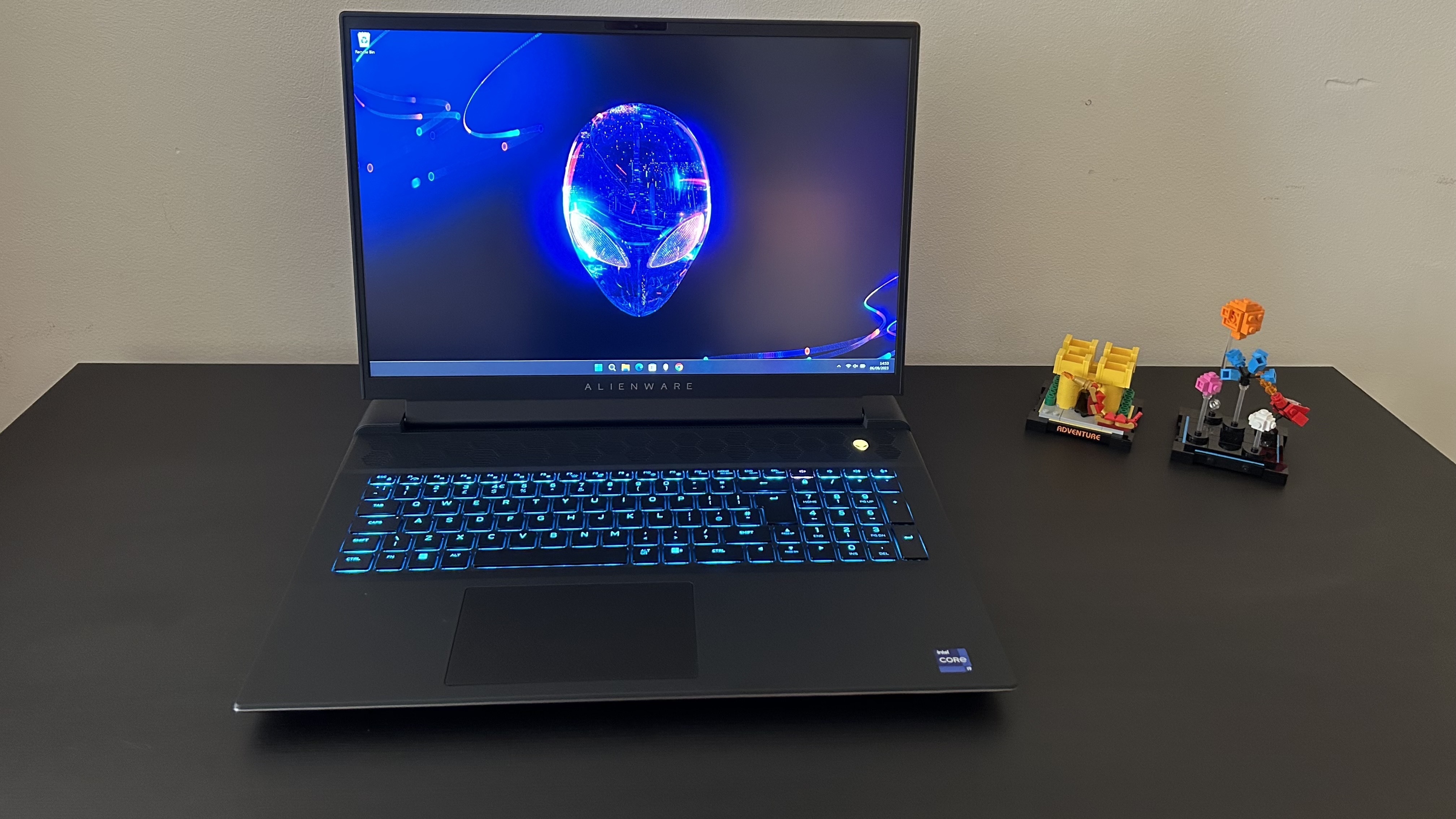
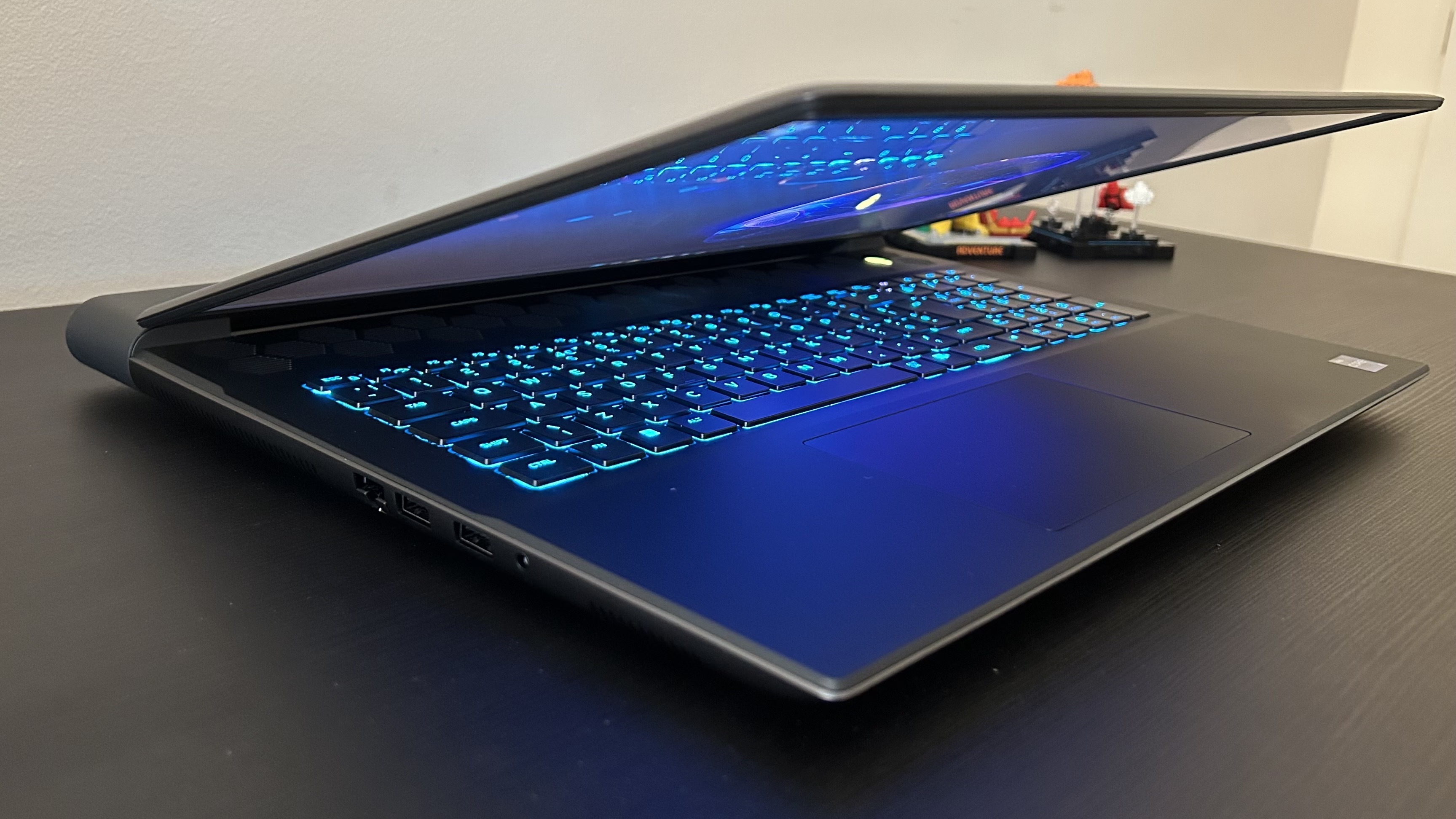
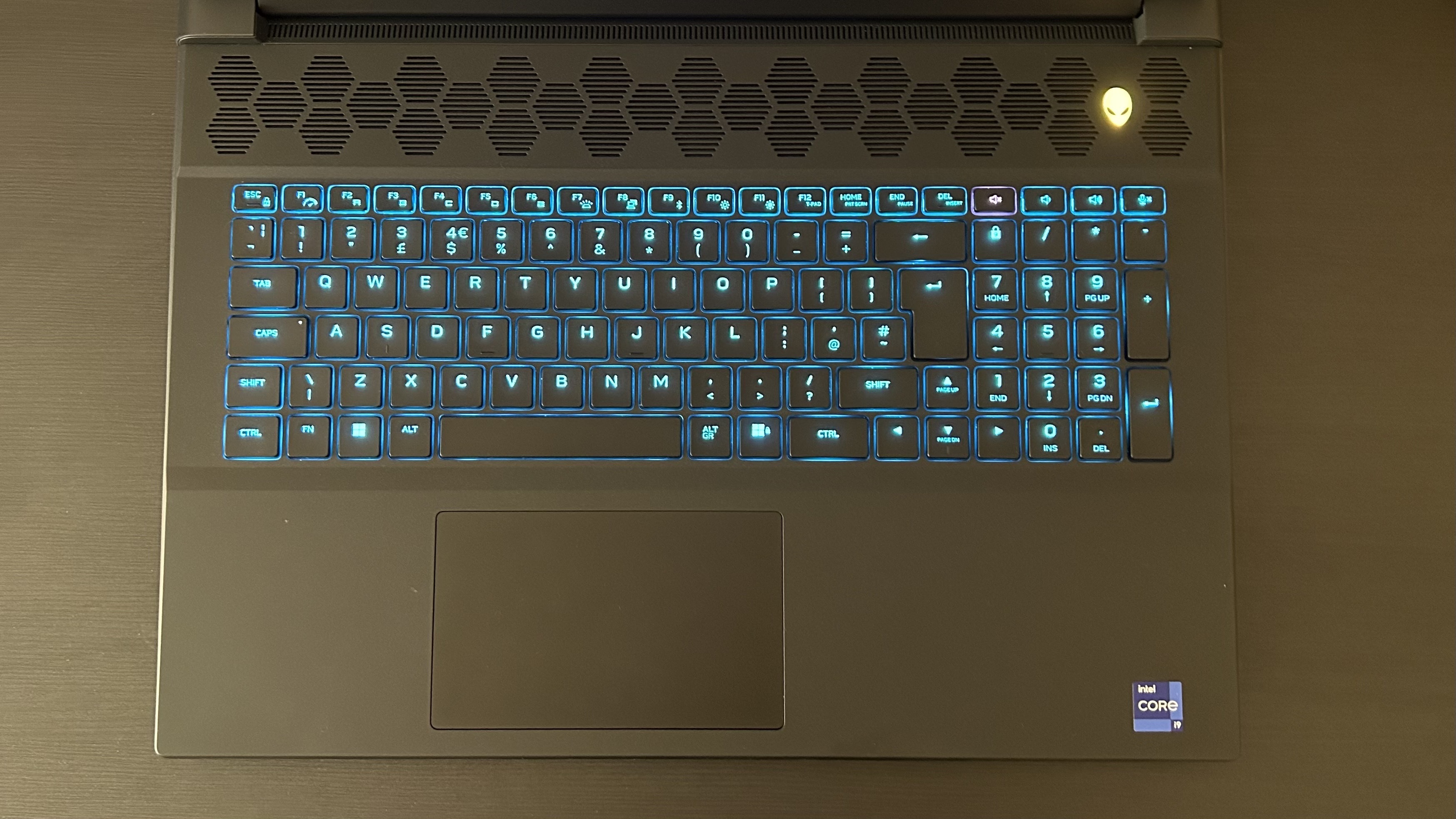
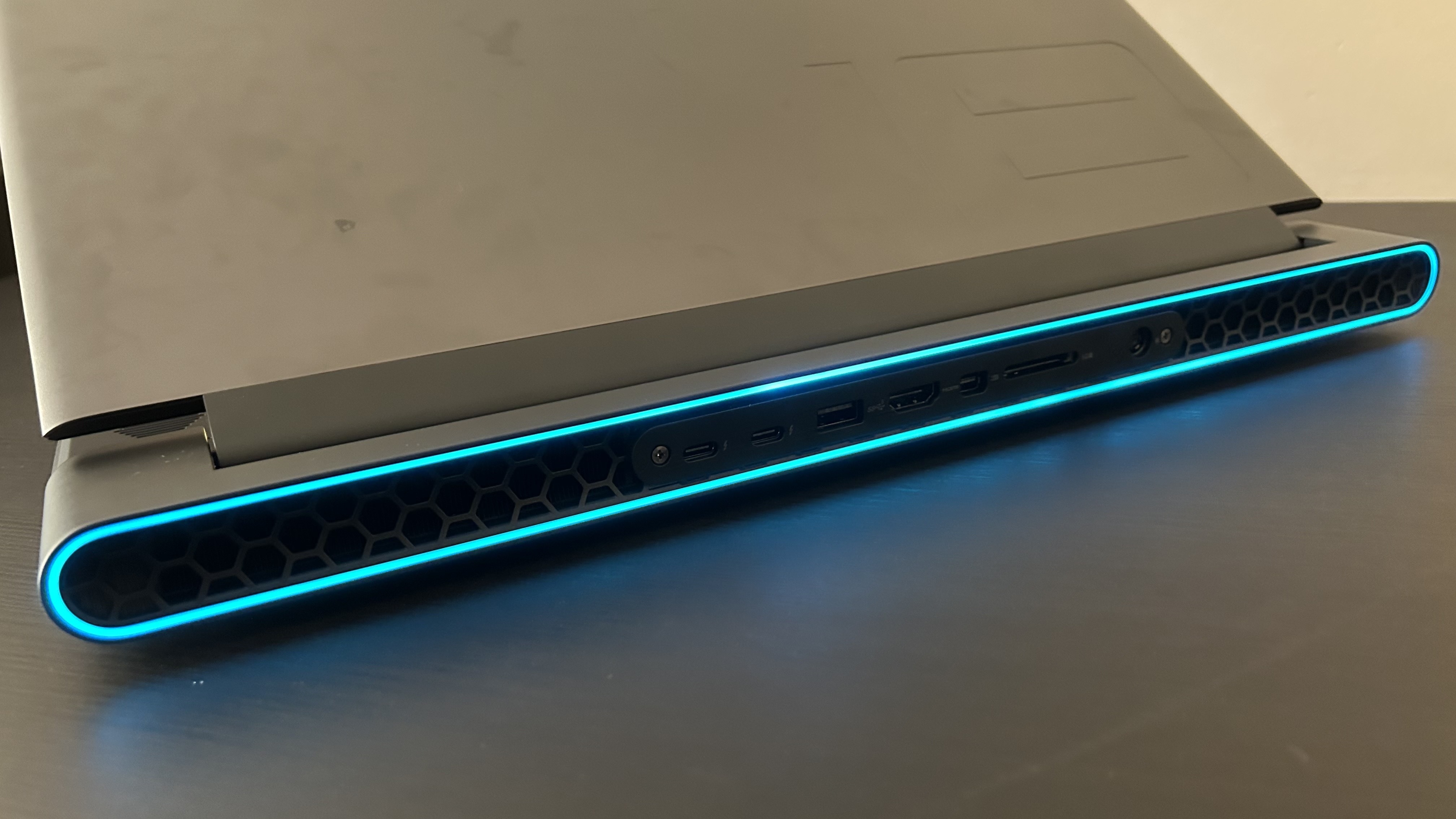
Specifications
Reasons to buy
Reasons to avoid
My favorite configuration:
Alienware M18 | Intel i9-13900HX | RTX 4080 | Available at Dell
I tested an RTX 4090 graphics card with this i9-13900HX processor, but considering you can get away with a sub-$3,000 price tag on an RTX 4080 configuration I'm pitching slightly downwards for my favorite spec. That keeps things incredibly competitive with the Asus below, which is for those who really want to push past that $3K barrier.
The Alienware M18 goes toe to toe with the Asus ROG Strix Scar 18 in terms of sheer performance, but does so at a considerably lower price. With a range of configuration options, a slick design, and features more geared towards desktop usage, it's the best 18-inch gaming laptop overall in my books.
✅ You want big-screen gaming without too high a cost: The Alienware M18 can be configured as low as $1,699.99. While that's still expensive, it's nowhere near the lofty price tags other machines of this scale regularly reach.
✅ You're keeping your laptop on your desk: With a 4.23kg weight, this thing isn't travelling too far. This is a supremely heavy laptop, with a larger footprint than most to boot. That means the Alienware M18 is perfect for those planning to keep their laptop firmly in place.
✅ You don't want messy cables: The majority of the M18's ports are located to the rear of the machine which means you can connect your desk setup without having cables spreading out from the sides. There are still a few handy USB-A and USB-C options on the sides for easy access as well.
❌ You're a competitive player but still want QHD+: The 165Hz rate on the QHD+ screen option is going to hold competitive players back. The FHD+ option is geared towards those more speed-inclined, though, with a whopping 480Hz refresh rate.
❌ You want the best screen quality possible: We noticed that the matte cover makes the screen considerably duller than its competitors, which also has an effect on color contrast.
❌ You want more of an option to travel: All 18-inch laptops are difficult to transport, but this particularly so. There are slimmer, lighter machines out there for those who would still like the option to take their show on the road.
Design: The Alienware M18 had a surprise for me when I first opened the box. Gently sloping the front lip to a thin taper means that the whole design feels more manageable than the more boxy Strix Scar 18 from Asus. No, this isn't a portable laptop by any means, you're still picking up a massive 410 x 319 x 25 mm footprint and a considerable 4.23kg weight, but that slicker design makes it look a little less chunky on a desk top. It's not as slimline as the MSI Stealth 18 AI Studio, but as I saw in the performance department on that model, that's not always a bad thing. Elsewhere, you've got all the design staples of an Alienware rig. A cool aluminium lid sports an embossed 18 along the top, with the plastic main body holding onto the same gray aesthetic throughout. Of course, there's still a nice RGB light show to take in, with a more subtle approach than Asus'.
Features: Of course, the big player here is that 18-inch screen. Dell has made some interesting decisions with the specs it offers here, there are only two options; QHD+ 165Hz or FHD+ 480Hz. It would have been nice to have a middle option - both the Razer Blade 18 and Asus ROG Strix Scar 18 have found happy homes in the QHD+ 240Hz region. While motion is still slick, higher framerate games could stand to benefit a little more from improved handling overall. I also noticed that this display runs less bright than both Razer and Asus's options, and doesn't offer any additional HDR capabilities.
However, with an excellent port selection, 1080p webcam built in, and a full sized keyboard (with full sized number pad) this feels like a real desktop PC alternative. Working particularly hard in the M18's favor though, are the component options. With RTX 4060 configurations on the table at sub-$2,000 prices, the Alienware M18 is winning in the value category. That's perfect if you're after big-screen entertainment but don't want to splash thousands on graphics cards you won't make the most of.
Performance: The Alienware M18 almost bested the Strix Scar 18 in our testing, even beating it in a handful of benchmarking scenarios. There's some incredible performance under the hood here. In fact, the M18 performed better in more demanding titles like Returnal and Total War: Three Kingdoms, and always packed three figure framerates well into the highest graphics settings in native resolution.
Yes, Alienware has made some sacrifices along the way - in screen, speakers, and portability - but if you're after a desktop replacement that really can take over your setup, you're in the right place.
Alienware M18 review
Verdict: The Alienware M18 does make a few sacrifices, but in doing so it manages to position itself as an incredibly versatile gaming laptop. You can configure it up to the high heavens if you have the budget, or keep things more grounded for big-screen gaming under $2,000. That's not something many 18-inchers can claim - and especially not machines that manage to squeeze this amount of power out of their components.
CES 2025: Alienware didn't announce a new M18 model in its CES roster this year. In fact, the new Alienware Area-51 18-incher will be taking over from the M-Series in 2025, with both this and the X-Series devices being retired in favor of the new chonkster. The Alienware 18 Area-51 is now available to pre-order starting at $3,399.99, with shipping running from mid-April to the start of May.
Read more: Alienware M18 review
The most powerful gaming laptop we've tested
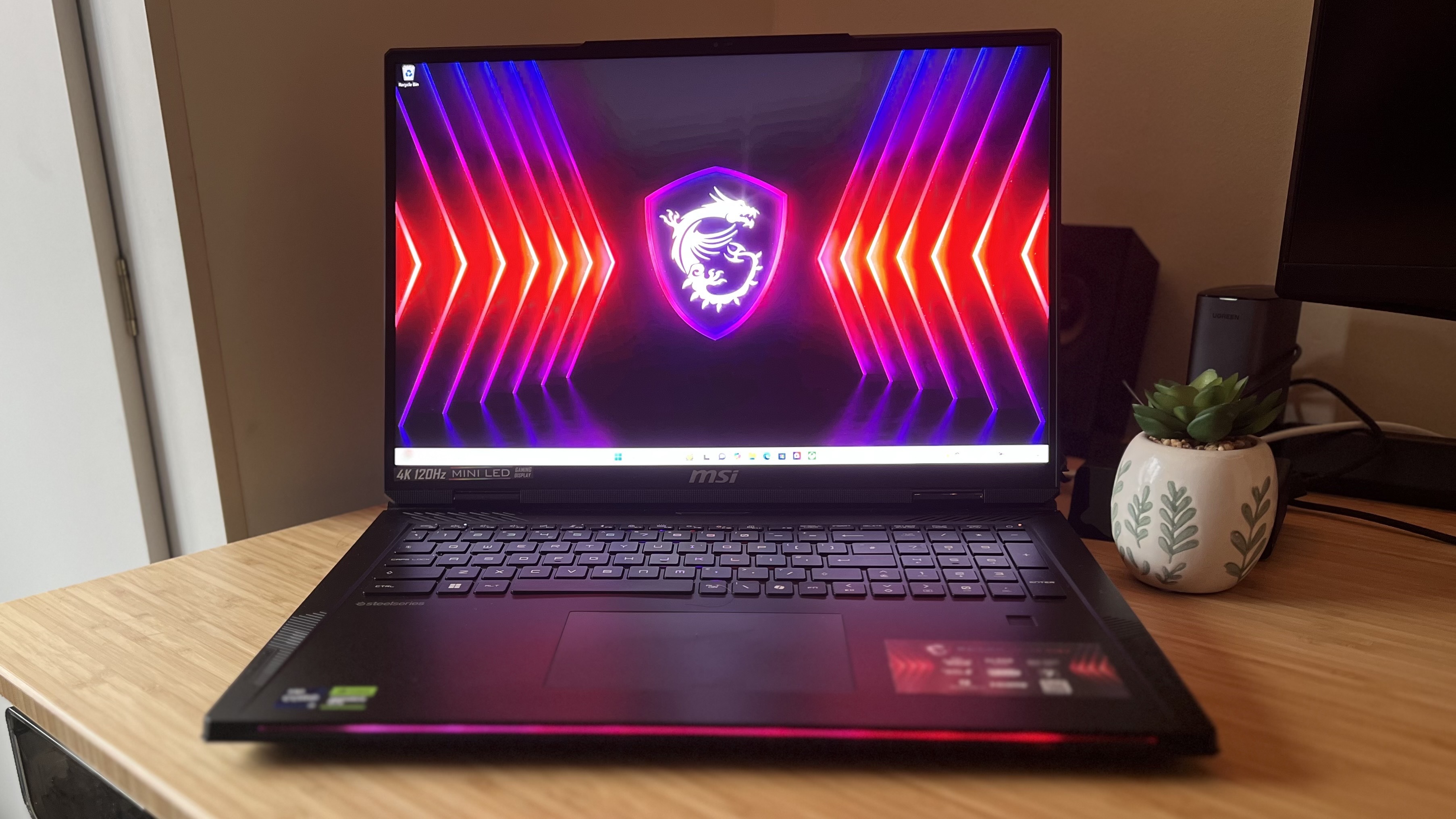
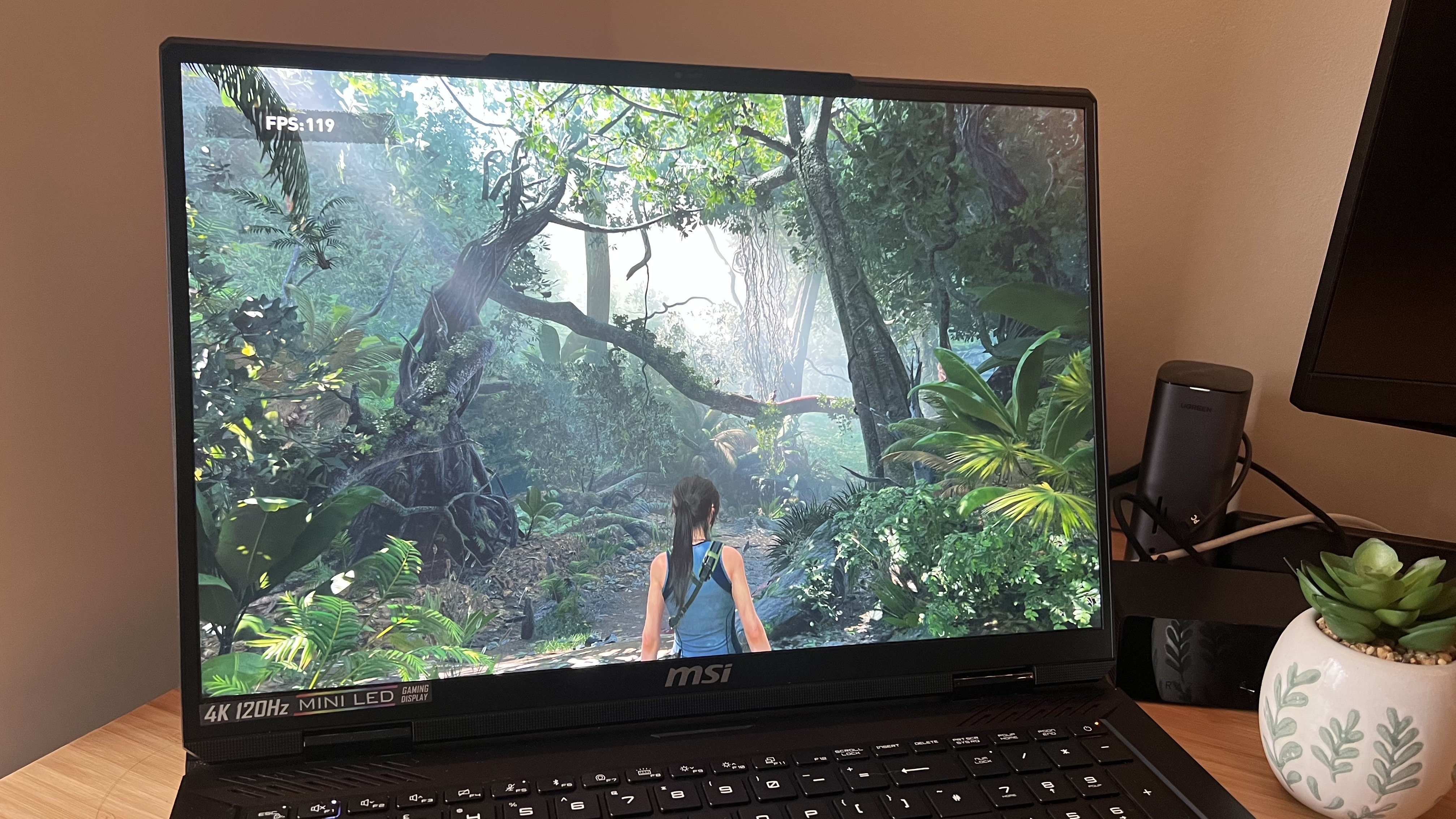
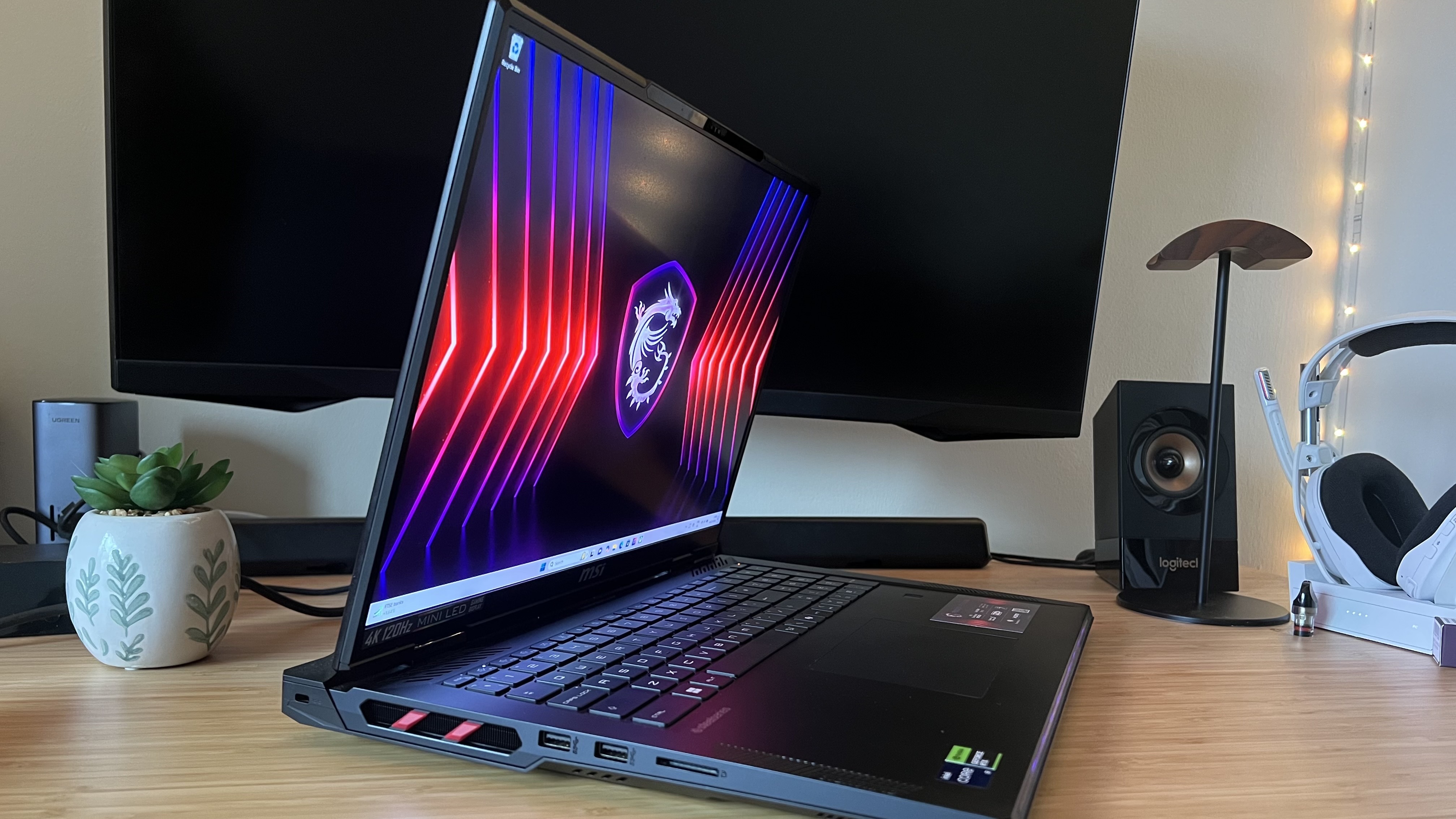
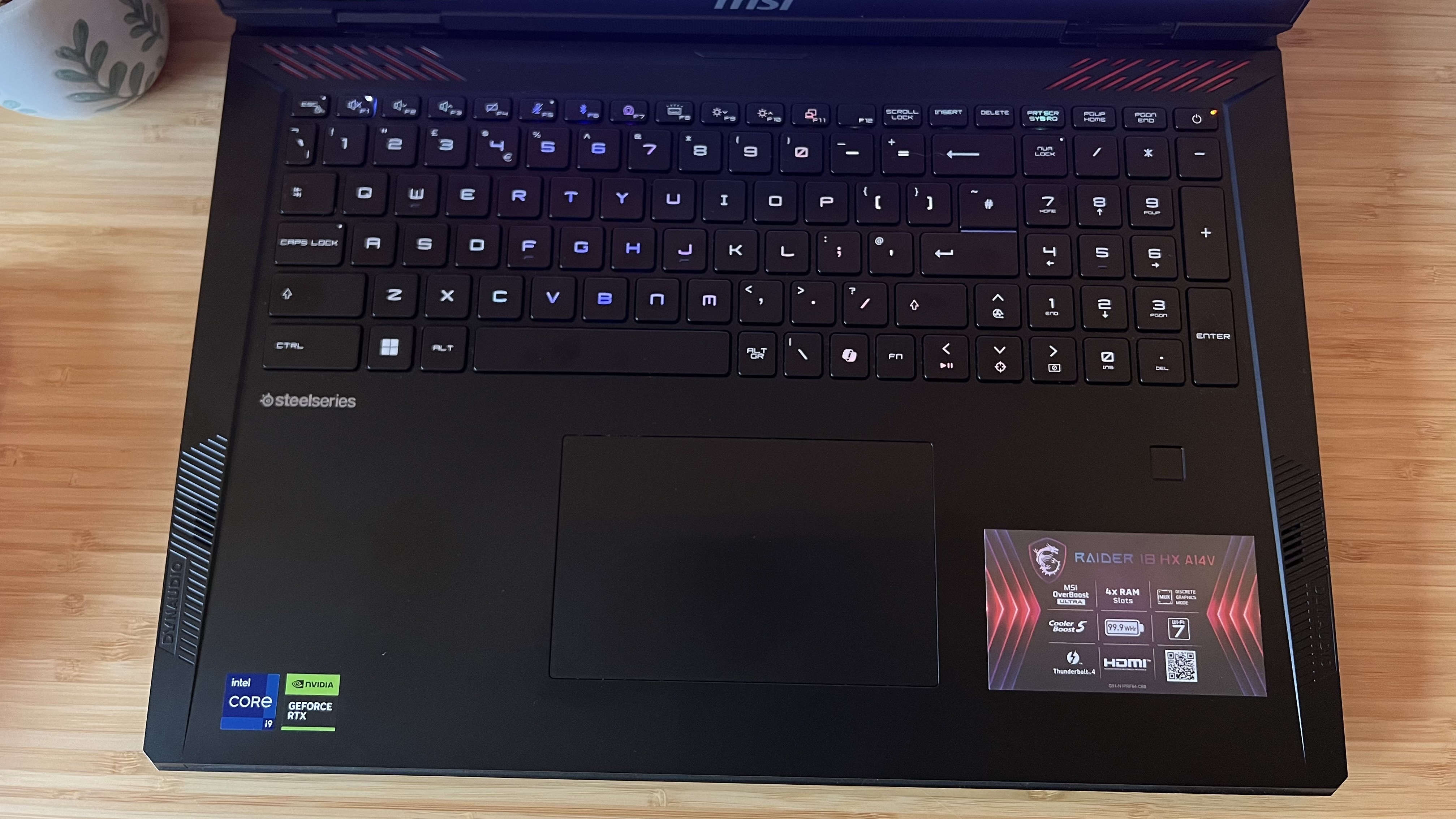
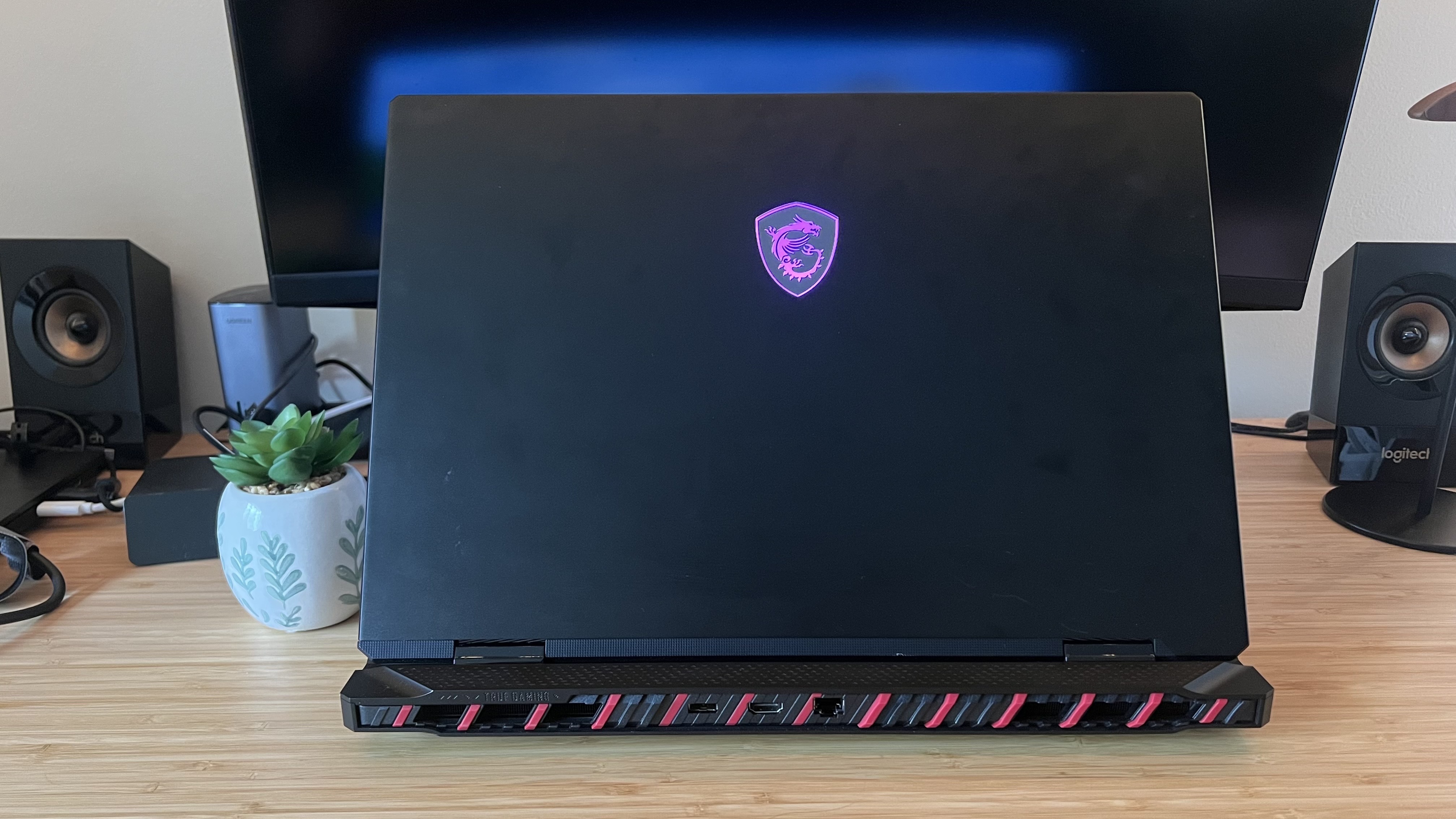
Specifications
Reasons to buy
Reasons to avoid
My favorite configuration:
MSI Raider 18 HX | RTX 4090 | Intel i9-14900HX | Available at Amazon
If you're going all out on power you might as well go the full distance. This RTX 4090 configuration pairs those top of the range components with 64GB RAM and a 2TB SSD for a full cast of over-achievers.
The MSI Raider 18 HX actually sits below the MSI Titan 18 HX in the brand's hierarchy, but the same RTX 4090 / Intel i9-14900HX configuration performed better in my testing overall. That makes this behemoth the most powerful gaming laptop I've reviewed so far - and the best part is it doesn't come with the Titan's $5,000 price tag.
✅ You keep your laptop on your desk: Like most 18-inch machines, this is a desktop replacement, with all the ports and weight to stay put firmly in your setup.
✅ You want 4K gaming: This is one of the first gaming laptops I've tested that has put up playable 4K framerates in more demanding games.
✅ You have a separate mouse and keyboard: While certainly workable, the keyboard and trackpad aren't MSI's best in here, so it's best if you already plan on using separate accessories.
❌ You have a cheap gaming headset: While the MSI Raider 18 HX is the most powerful machine I've tested, it's also the loudest. If you don't have a solid noise seal on your gaming headset, you're going to struggle.
❌ You need to travel with your laptop: 18-inch rigs aren't designed to fit in a backpack, and the Raider is no different. If you need something more portable, you'll be moving down the power scale.
❌ You don't need a 4K display: The 4K Mini LED panel is fantastic, but it does drop you down to a 120Hz refresh rate. If you don't need the full UHD, it's worth opting for a faster QHD resolution model.
Design: The Raider looks particularly similar to the Titan on the desk, with a chunky form factor, a preference for diagonal highlights around the grills, and a textured rear shelf jutting slightly out the back. It's a well-built machine, though doesn't stand up to the far more expensive model in some smaller details of its build quality - I noticed a little extra flex in the main deck and the screen wobbled more freely when both opening the lid and typing particularly heavily. That wasn't as bad as the creak and flex of the MSI Stealth 18 AI Studio - this is still a brick of a unit and considering its 3.6kg weight is going to keep it out of a backpack, it's not even going to be in harm's way all too often. It is, however, lighter than the Alienware M18 featured further up this list.
Everything remains very subtle on the top lid, with a RGB MSI logo and matte finish, however there's a more gamerfied aesthetic going on inside. Whereas most gaming laptops in this higher price category tend to keep things fairly simple under the hood, the main keyboard here is sandwiched between two raised angular sides. It gives a more gaming than high-end ultrabook vibe. If you're looking for something a little more streamlined, the MSI Stealth 18 AI Studio does offer a more simplified look, with a simple RGB light strip offering a little visual pzazz.
Features: Up top we've got a 120Hz 4K Mini LED panel ripped straight off the Titan (and then featured in the Stealth model), offering the same incredibly brightness, color clarity, and vibrancy in a cheaper package. This screen, at its full 18-inches, is a sight to behold, with perfect toning and solid viewing angles. That 120Hz refresh rate might trip up those who have grown accustomed to lower resolution 240Hz or 144Hz displays, so if you don't prioritize 4K it's worth seeing what QHD options work better.
Under the hood, components are all up to date with Intel's 14th generation i9 and RTX 40-Series GPUs (beating the Stealth's Intel Ultra AI lineup). You're getting slightly more choice compared to the Titan, with RTX 4070 and RTX 4080 options lined up next to that RTX 4090. Two Thunderbolt 4 ports and three USB-As keep you covered for desktop connectivity, with WiFi 7 keeping that internet future-proof as well.
It's a shame that the MSI Raider 18 HX seems to be let down by its keyboard, which feels a little too soft under the hands to truly keep up with similarly priced options from Asus (and drops the mechanical approach taken by the Titan). However, it's easily passable for everyday play if you don't have a separate accessory. The trackpad is similarly spongey.
Performance: This is where the MSI Raider 18 HX truly shines. It beat the Titan (previously the most powerful gaming laptop I had tested) in pretty much every run, scoring over the more expensive model in 3D Mark's Time Spy and Fire Strike results. In-game benchmarks tell a similar story, with the Raider coming up top in every FHD and QHD test I ran, besides from Returnal where the Alienware M18 still claims the top spot. Not only that, but 4K performance was particularly impressive. The system achieved a solid 138fps in lighter titles like Shadow of the Tomb Raider at its highest settings, even managing to stay comfortably above 60fps in more screen-demanding Total War: Three Kingdoms runs at high settings as well.
This is a gaming laptop set up for high-resolution, immersive gameplay rather than high-speed 1080p competitive settings.
MSI Raider 18 HX review
Verdict: The MSI Raider 18 HX is a beast of a gaming laptop that puts pure immersive performance at the top of its priority list. That gear doesn't necessarily work for everyone - those who need a higher refresh rate display will want to drop back to a QHD model, and the build quality isn't up there with the top of the range. However, if you're chasing the highest framerates possible, this is where I'd point you right now.
CES 2025: MSI has given the Raider 18 HX a new set of guts this year, with an Intel and AMD option heading to the shelves. Both offer RTX 5080 and RTX 5090 GPUs but Intel's model can pack Thunderbolt 5 into the proposition as well.
Read more: MSI Raider 18 HX review
The best slimline gaming laptop
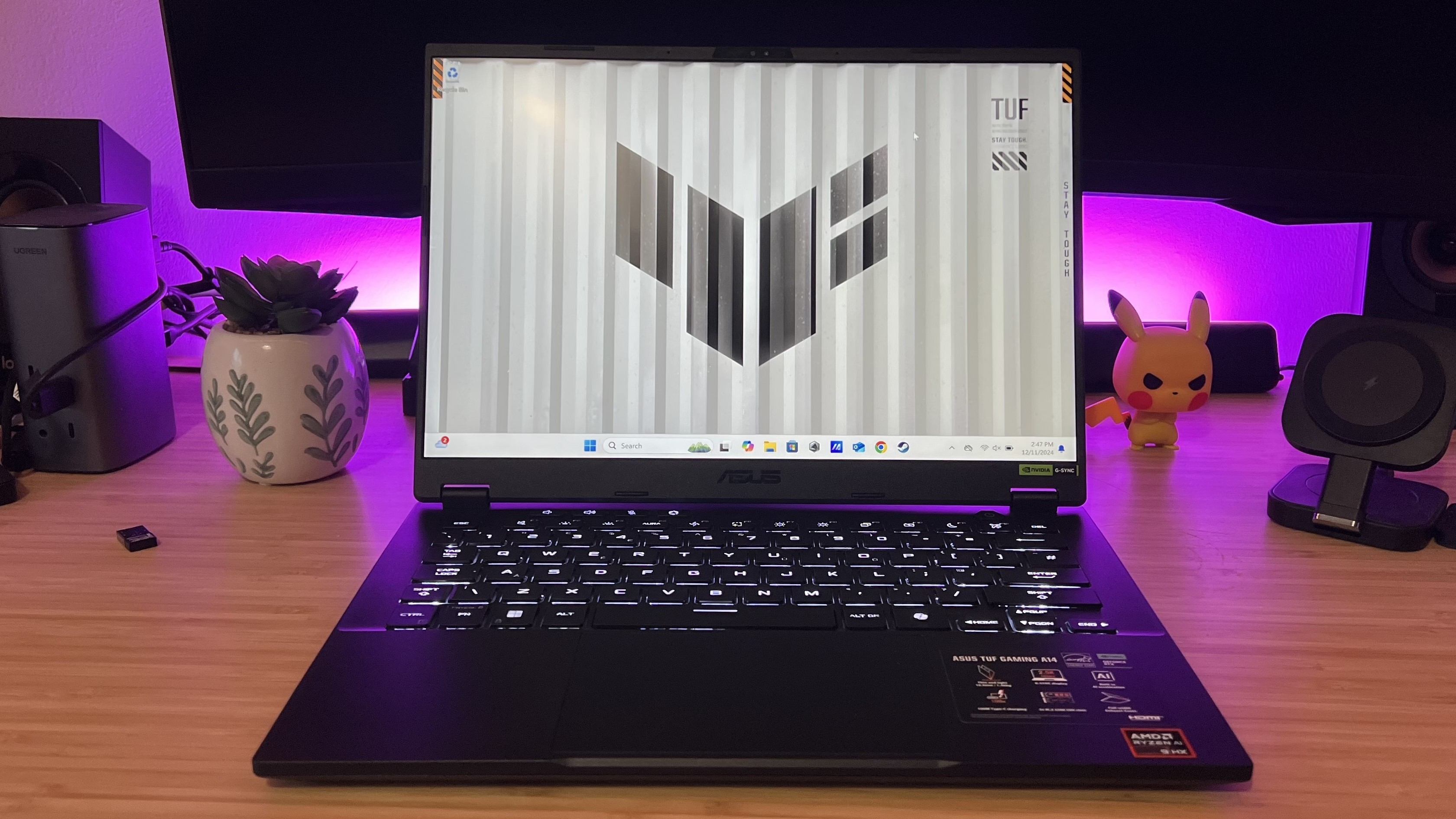
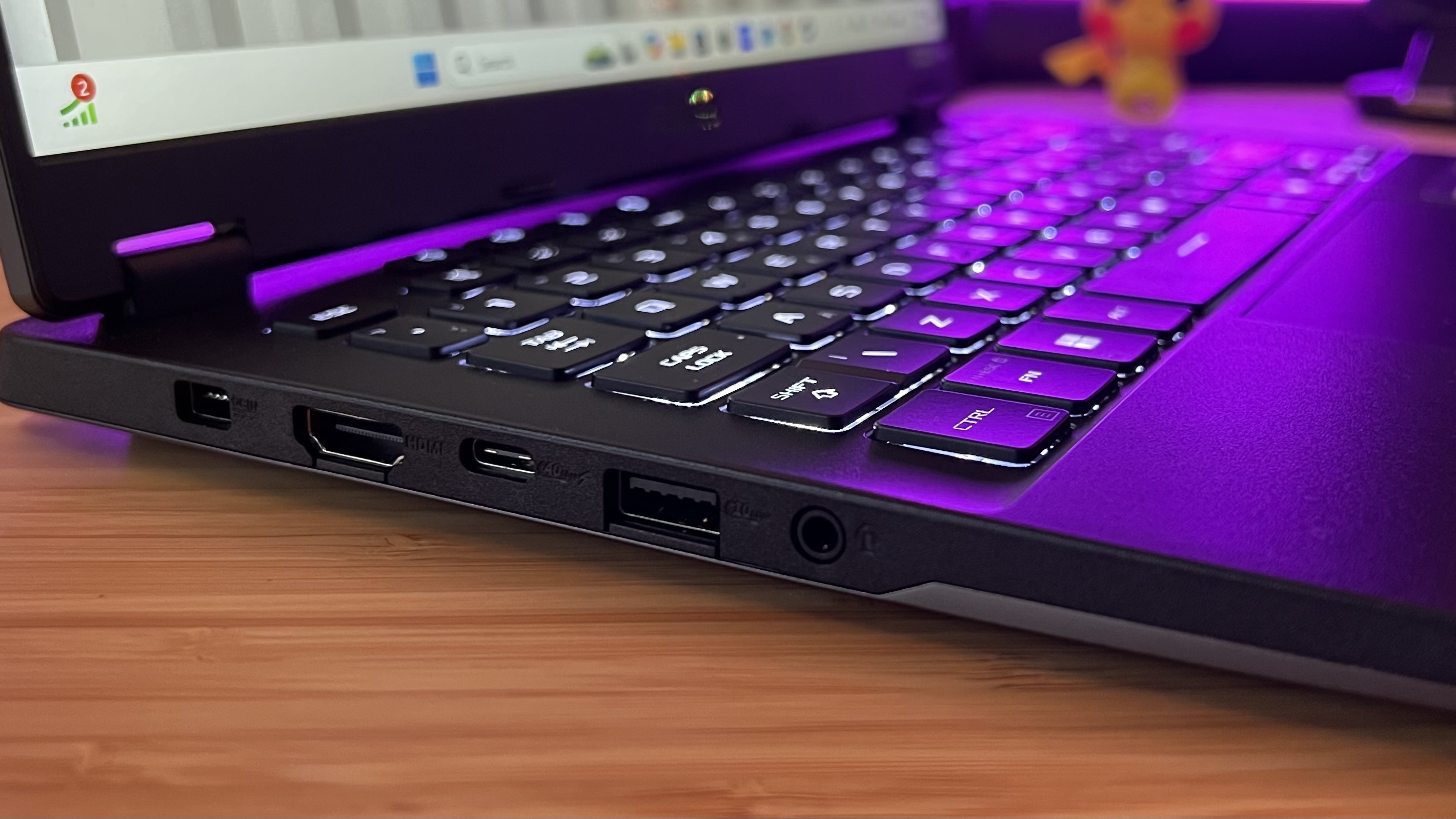
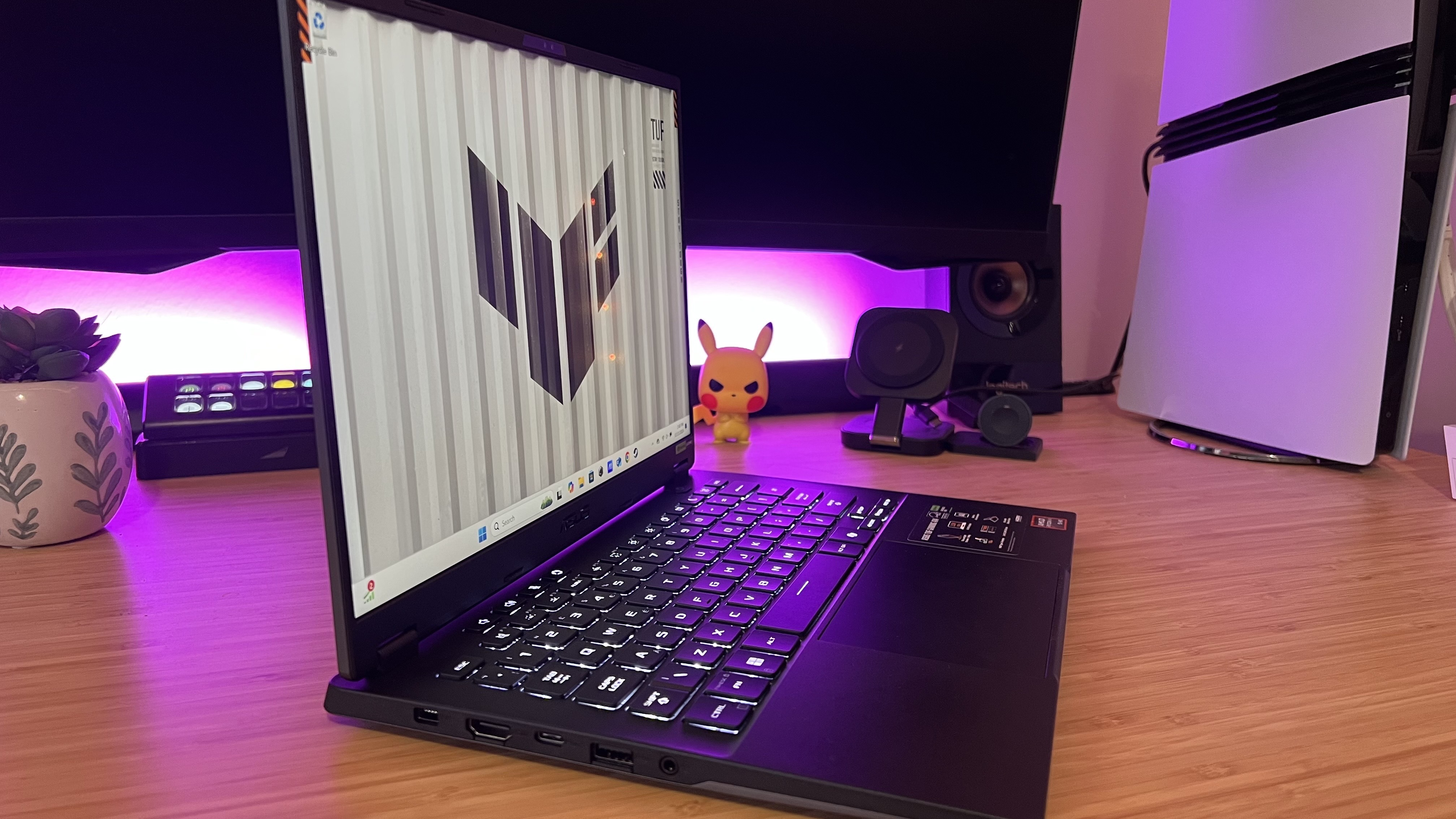
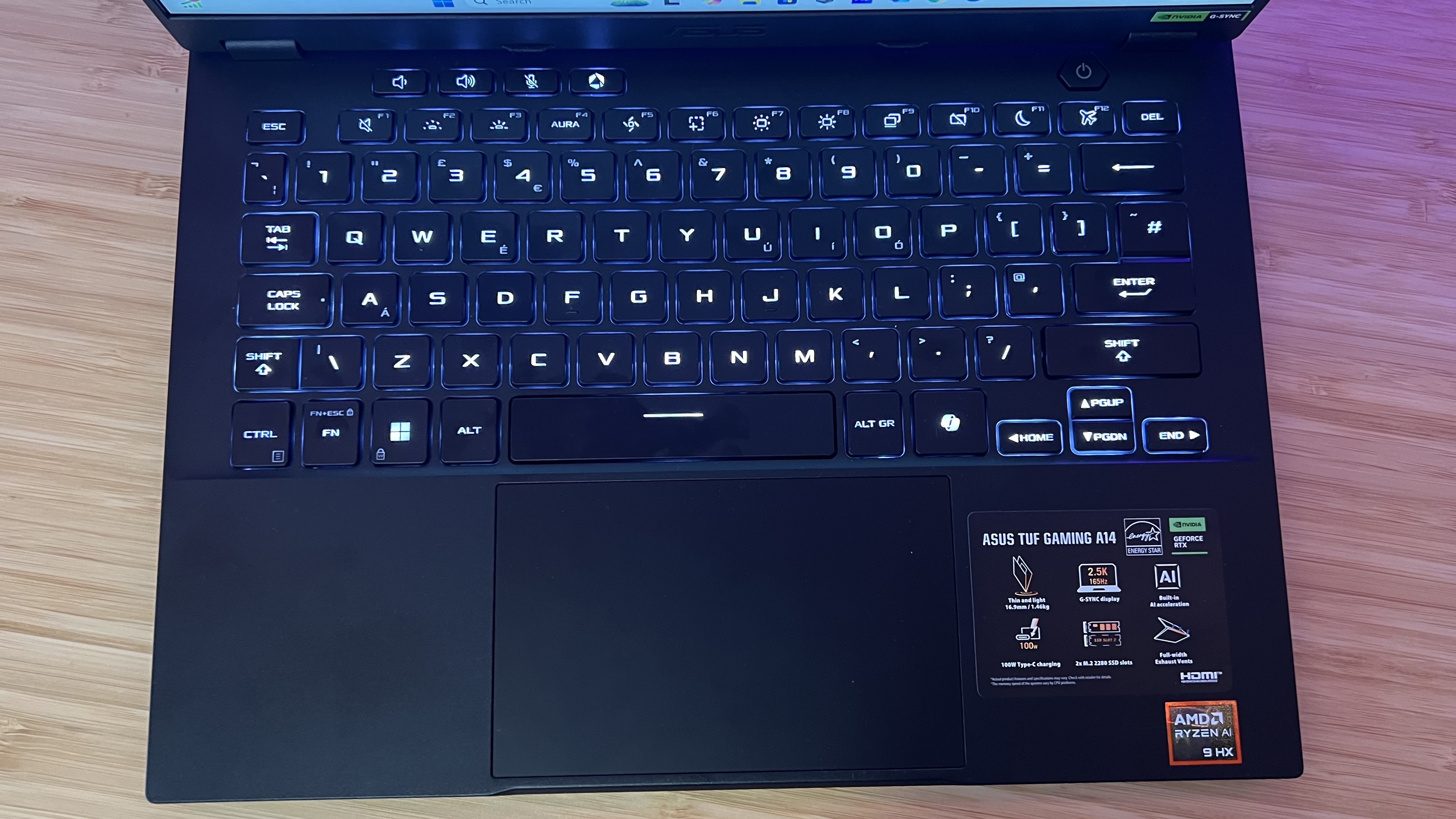
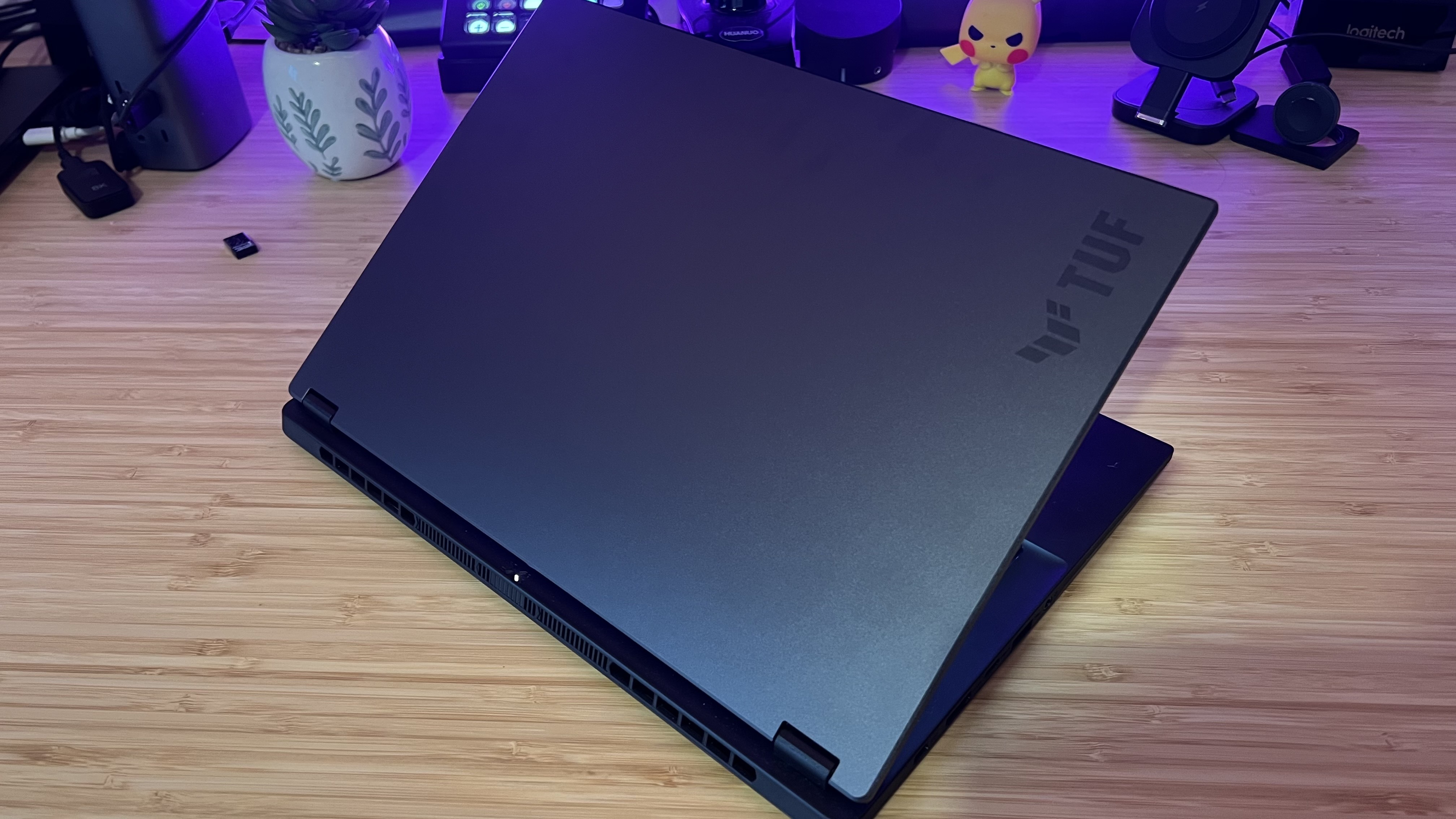
Specifications
Reasons to buy
Reasons to avoid
My favorite configuration
Asus TUF A14 | RTX 4060 | AMD Ryzen AI 9 HX 370 | Available at Amazon
The AI processor I tested is seriously impressive, and in this thin and light form factor it has to be kept for the full package. Not only are you getting that CPU, but this model also packs an incredible 32GB RAM and 2TB of SSD storage space - unheard of at this $1,499.99 MSRP.
The Asus TUF A14 is now the best slimline gaming laptop I've tested, after beating the HP Omen Transcend 14 in everything apart from screen. Yes, you're dropping the OLED display of my former top pick, but considering you're gaining so much in raw power and dropping a little weight (while keeping the cost lower), this is the new model to beat.
✅ You travel regularly with your laptop: The A14 feels made for backpacks, with a super sturdy build and a low weight, it's the most portable machine I've tested yet.
✅ You prefer a subtle design: Gone are the loud icons and gaudy stamps of previous TUF gaming laptops - this slate gray and black aesthetic slots into both work and play scenarios.
✅ You want to use AI features: Whether it's normal Copilot tasks or you're looking to use more game-boosting features over the next couple of years, this is the processor to do it with.
❌ You prioritize screen vibrancy: Both the HP Omen Transcend 14 and Asus ROG Zephyrus G14 match this slimline form factor, but with high-end OLED displays up top. If you want that crisp contrast and boosted HDR functionality you'd be better off moving further up the price scale.
❌ You want to keep your laptop on your desk: If you don't need to travel with your machine there's better value in chunkier models. You'll notice a performance bump even with similar components under the hood just from that extra chassis space alone.
Design: The TUF A14 reminded me of one of the first gaming laptops I bought for myself; the Asus TUF Dash F15. The cool slate aluminum lid and cheaper plastic internal deck, wrapped up in a super slick slimline form factor is a true sight to behold. Things are a little more refined these days, with no cringey text stamped onto the main palm rest, or heavy angular lines running across the main lid. That means this is a true hybrid machine in its aesthetic - it won't stand out in either a work or play environment. That might not be to everyone's taste but it's certainly versatile.
This is one of the lightest machines on the market, and it manages to keep its waistline thin as well. While not as tiny as the Alienware x14, it carries the same 0.7-inch thickness as the more expensive Zephyrus G14 and HP Omen Transcend 14 while weighing in less than both. You are getting some slightly cheaper materials in the mostly plastic chassis (save for the aluminum lid), but with MIL-STD 810H certification it remains plenty durable. That lid also makes it a better build than the much cheaper-feeling Acer Nitro V 14.
Features: Configuration options are limited to an RTX 4060 GPU, which taps out a little earlier than the RTX 4070 options available in the Zephyrus G14. However, putting all your eggs in that graphics basket will have you missing out on a stunner of a processor. The AMD Ryzen AI 9 HX 370 is based on AMD's latest Zen 5 system, offering up to 50 TOPS across a super sophisticated NPU. In everyday terms, it's super fast and super efficient. The exact kind of processor you want in a slimline gaming laptop. That's not all, though, Asus is packing this $1,499.99 configuration with 32GB RAM and a 2TB SSD - specs I often see in machines pitched at around $1,800 - $2,000. There are cheaper configurations available as well, with the AMD Ryzen 7 8845HS getting involved.
Above all that you've got a 165Hz QHD+ display with a nicely bright response that dwarfs that of the Asus TUF A15 in speed and resolution. A well-spaced and tactile 1.7mm-travel keyboard lines the bottom section, with a generously sized glass trackpad underneath as well. Ports offer everything you could ask for - in brief, two USB-A options, two USB-C options (one with power delivery), a micro SD, and 3.5mm audio.
Performance: The efficiency of the Asus TUF A14 meant it was able to threaten even RTX 4070-toting machines like the Razer Blade 14 and Asus ROG Zephyrus G14 in my testing. Lighter 1080p benchmarks saw the A14 either beating or narrowly falling short of these far more expensive machines, and that little RTX 4060 could certainly keep up in QHD+ as well. It pitted miles ahead of the HP Omen Transcend 14, a machine I praised earlier in the year for its impressive benchmarks in this slim and light competition pool. Not only that, but that AMD CPU put the Ryzen 9 8945HS and Intel Core Ultra 7 155H to bed as well, topping the charts with an 8,259 score in PC Mark 10 and an astonishing 1,207 multi-core benchmark in Cinebench R24.
Verdict: The Asus TUF A14 is one of the most impressive gaming laptops I've tested this year, and while it's not quite the best 14-inch model due to its lack of OLED display and higher configuration options, it definitely wins in the flyweight bout. A super slimline profile paired with efficient and powerful internal components makes for an excellent machine.
Read more: Asus TUF A14 review
Latest gaming laptop news
RTX 5090 mobile results are in
Official reviews, including mine, for the Razer Blade 16 2025 have just landed, and they bring with them first word on mobile RTX 5090 performance. If you've been holding out for a generation boost in native performance over the RTX 40-Series, you'll be holding out a little longer. My benchmarks put the new card at around the same level, though mostly slightly higher, as older releases. But it's easy to see why.
The Blade 16 many are using for these early testing results has to use a lower TGP than its predecessors. This is an ultra-slim gaming laptop - it's never going to be able to compete with the hundreds of watts being pumped into a desktop card. What is impressive is the fact that this slimline, boosted battery, device can keep up with more rugged RTX 40-Series cards in the first place.
Many are concerned that Nvidia seems to be relying heavily on DLSS for its performance upgrades this year, and I can see why. The brand doesn't have a great track record with its communication - at best downplaying the role DLSS is playing in its advertised benchmarks and at worst misleading the market. However, gaming laptops are a different ballgame. For these machines, efficiency is everything - which is the exact playground frame generation can thrive in.
We're still in the early days of RTX 50-Series gaming laptop testing, though, so it will be interesting to see what larger rigs can do with the same tech.
How I test gaming laptops
I live, work, play, stream, and browse on every gaming laptop that passes my desk for a minimum of two weeks. That allows me to assess its build quality, portability, display features, keyboard and trackpad, port selection, and form factor in a real-world setting as if it was being popped straight into your setup. For this reason, I use every laptop both by itself and as part of a larger monitor system (usually via USB-C using a Ugreen Revodok Pro 312 docking station).
I rate gaming laptops based on their design, features, and performance - and each section requires its own tests and real-world experiences.
The design of a laptop incorporates everything from its aesthetic (and how well it will blend into non-gaming scenarios) to build quality (its materials, any wobbles around the hinges, flexibility in the screen or base plate, and any creaking or rattling internally). In the world of gaming laptops, portability also plays a large role so I make sure to take each machine out with me for a series of coffee shop crawls, or a longer travel distance during my testing period.
The specific features I test are the display (brightness, clarity, color range, sharpness, speed), keyboard (size, balance, typing feel, placement), webcam, port selection (and placement), configuration options, trackpad, and onboard software options. All of these elements aren't just reviewed as a whole package, but directly compared against similarly priced competitors to understand each machine's value proposition as well.
Then we get to the all-important performance category. Every gaming laptop that I review is stress-tested against a series of benchmarking processes and everyday use. I run a standardised series of performance tests on each rig, benchmarking on both High and Ultra / Highest across:
- Shadow of the Tomb Raider
- Total War: Three Kingdoms (Battle)
- Returnal
- The Talos Principle 2 (Anthropic Hills)
I carry out these benchmarks at both 1080p and other native resolutions offered by each individual system.
I then test the GPUs inside these gaming laptops against 3DMark Fire Strike, Steel Nomad, and Time Spy. I also use PC Mark 10, Maxon Cinebench R24, and Geekbench tests for general productivity benchmarking.
Read more about how we find the best tech with the full Hardware Policy and find out exactly how we test gaming laptops.
Also tested
I'm always reviewing new gaming laptops, but only the very best make it to the top list above. You'll find all the most recent gaming laptop benchmark scores just below, and more information on each model further down.
Razer Blade 16 (2024) | Available at Razer
The previous generation Razer Blade 16 may well still be the best 16-inch gaming laptop for most players (it's certainly cheaper these days) - but it's no longer the best on the market. It's been replaced by its 2025 counterpart due to the newer model's improved keyboard, slimmer form factor, and more efficient insides.
Read more: Razer Blade 16 2024 review
Acer Nitro V 14 | Available at Acer
The Acer Nitro V 14 is an entry level rig, but it's one I'd wait for discounts on. We're still looking at $1,099.99 for an RTX 4050 PC, and I regularly see savings on similar models taking us well below that four-figure range. It's a solid machine that puts a lot of its emphasis on display quality, though configurations are limited to that basic GPU and it can be difficult to find on the shelves. The lower quality build also keeps it out of the Asus TUF A15 and Asus TUF A14's way as well.
Read more: Acer Nitro V 14 review
Alienware x16 R2 | Available at Dell
The Alienware x16 R2 is a sleek, slimline, and powerful piece of kit, but its shortcomings in its display, older ports, and comparative RTX 4080 performance mean it's not knocking any of our top contenders from their perches. If you're after an investment and you prioritize style, this is a fantastic choice though.
Read more: Alienware x16 R2 review
MSI Stealth 18 AI Studio | Available at Amazon
Yes, it's nice to have another slimline 18-inch gaming laptop on the market, but the build quality and overall performance potential of the MSI Stealth 18 AI Studio takes too much of a hit to be viable at this price point. You're still getting that fantastic 4K Mini LED display (also featured on the Titan and Raider), but this machine doesn't feel competitive in the current landscape.
Read more: MSI Stealth 18 AI Studio review
HP Omen Transcend 14 | Available at Amazon
The tiny HP Omen Transcend 14 impressed in its performance earlier in the year, but the Asus TUF A14 knocked it off the top spot with more powerful specs and a lower weight. If you're going all in on screen quality, though, it's worth checking out this OLED panel still.
Read more: HP Omen Transcend 14 review
MSI Titan 18 HX | Available at Amazon
The MSI Titan 18 HX was the most powerful machine I'd ever tested before the Raider passed my desk. It's still a beast of a machine, but with a lofty price tag and lower performance it's missed the cut.
Read more: MSI Titan 18 HX review
RedMagic Titan 16 Pro | Available at RedMagic
The Titan 16 Pro has price on its side, but a strange CPU and GPU pairing means the performance you're actually getting from this machine doesn't represent strong value. While its display is certainly impressive, and its keyboard and trackpad feel slick, this thing is a little messed up inside, which results in high temperatures and loud fans.
Read more: RedMagic Titan 16 Pro review
HP Victus 16 | Available at Amazon
If the HP Victus 16 had the display and keyboard to go up against the Asus TUF A15 it would be the best pick for budget-minded gamers. The RTX 4050 configuration I tested performed excellently in itself, but the main chassis cuts more corners to reach this lower price than Asus.
Read more: HP Victus 16 review
HP Omen 17 | Available at Amazon
A slightly boring chassis and cheaper build means the HP Omen 17 doesn't exactly stand out on the shelves but it does offer strong mid-range performance with a good selection of configuration options. The display is nicely colorful but lacks brightness and the ports are a little outdated.
Read more: HP Omen 17 review
Alienware M16 R2 (2024) | Available at Amazon
The Alienware M16 R2 has taken a performance sacrifice in order to squeeze into a more functional form factor. While we were impressed with the slimmer design, it did struggle during more demanding tests and considering the competition in this category is so fierce it just misses out on a spot here. Still, it's a fantastic machine in its own right, especially if you're firmly in the mid-range of price.
Read more: Alienware M16 R2 review
Acer Nitro 16 | Available at Amazon
The Acer Nitro 16 has some stiff competition in the Asus TUF A15, but while it does have a larger screen size and a nice selection of rear ports, its RTX 4070 performance was only just beating the A15's RTX 4060 configuration in our testing. We would have expected a bigger jump here, which suggests you'll get better value from Asus's model overall.
Read more: Acer Nitro 16 review
Asus ROG Zephyrus G16 (2024) | Available at Amazon
The Asus ROG Zephyrus G16 went up against the ROG Strix Scar 16 in our matchup, but the additional price-performance value in the Scar model won out. This is still a fantastic rig, though, especially if you're happy to prioritize portability over raw power.
Read more: Asus ROG Zephyrus G16 review
Asus ROG Strix Scar 18 (2024) | Available at Amazon
2024's Scar 18 fell short of the previous model's performance, and exists more as an iterative update both under the hood and up top. Considering 2023's laptop is available for far less than the new one these days, it's not quite packing the same punch.
Read more: Asus ROG Strix Scar 18 (2024) review
Asus ROG Strix Scar 18 (2023) | Available at Amazon
The original Scar 18 was the most powerful gaming laptop I had tested before the MSI Titan 18 HX came along - but it's still a solid option for anyone after the big-screen experience without spending on MSI's super-luxury price tag.
Read more: Asus ROG Strix Scar 18 (2023) review
Lenovo Legion Pro 7i | Available at Amazon
The Legion Pro 7i is an impressive piece of kit, but its 16-inch form factor doesn't give its high end components enough space to breathe compared to the Scar 16 sitting at the top of our list. In a mid-range configuration this is a beast, but its RTX 4090 benchmarks underwhelmed in testing.
Read more: Lenovo Legion Pro 7i review
Razer Blade 14 | Available at Amazon
What's keeping the Razer Blade 14 in second position behind the Asus ROG Zephyrus G14? Its price. This is a fantastic machine, even if you are tapping out at an RTX 4070 configuration. However, the price tag is prohibitive considering the smaller specs on offer.
Read more: Razer Blade 14 review
Asus ROG Strix Scar 16 | Available at Amazon
The Asus ROG Strix Scar 16 used to be sitting pretty in the top spot, but it's been ambushed by the Lenovo Legion Pro 7i now. It's still a fantastic rig, especially if you don't mind a chunkier form factor, but its 2023 performance didn't hold up to 2024's standards.
Read more: Asus ROG Strix Scar 16 review
HP Omen Transcend 16 | Available at Amazon
The Omen Transcend 16 was actually our favorite slimline gaming laptop before its 14-inch sibling arrived on the shelves this year. As it stands, the larger 16-inch form factor is less conducive to that slimline portable feel than the new release's 14-inch design. However, this is still an impressive device for those chasing a bigger screen.
Read more: HP Omen Transcend 16 review
MSI Raider GE78 | Available at Amazon
The MSI Raider GE78 was one of the first RTX 40-Series gaming laptops I tested, and it still felt a little too old school to make it onto this list in its day. There's an outdated cooling system, cumbersome form factor, and old-timey aesthetic holding this powerhouse back.
Read more: MSI Raider GE78 review
Lenovo Legion Pro 7i Gen 8 | Available at Amazon
The previous generation Lenovo Legion Pro 7i fit the same design characteristics as the newer model currently occupying my top spot, but its performance wasn't quite on par with the machines of its day. Considering you can still spend thousands on this rig, it's just not worth it against the competition.
Read more: Lenovo Legion Pro 7i Gen 8 review
Asus ROG Zephyrus M16 | Available at Amazon
I loved the Asus ROG Zephyrus M16, but it was also the first RTX 40-Series machine I got my hands on. Considering the jump between generations, it was easy to get excited about the numbers popping up on my screen. Since its release, the M16 has been overtaken by skinnier models and more powerful cards.
Read more: Asus ROG Zephyrus M16 review
How to find the best gaming laptop for you
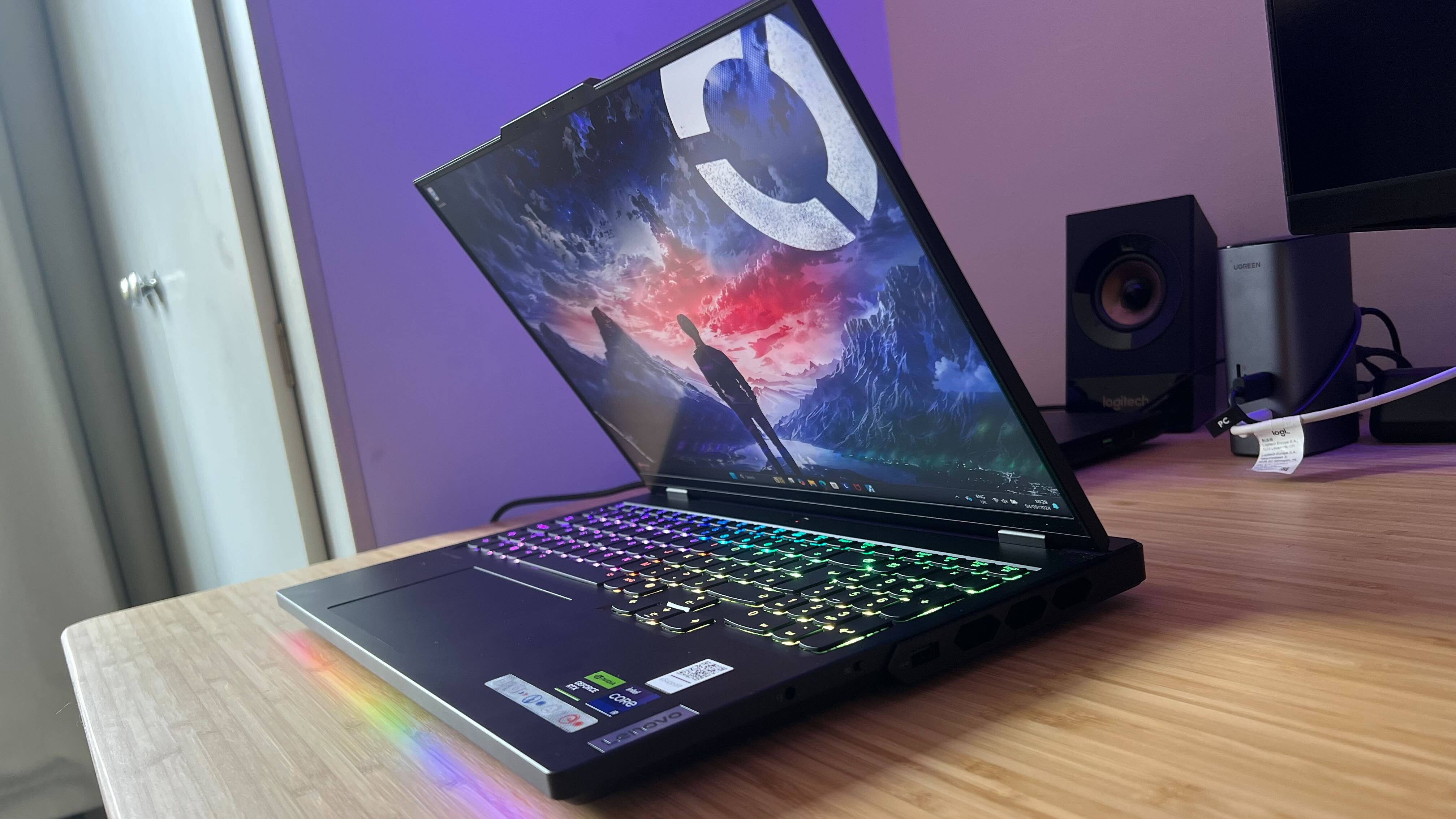
Gaming laptops come in all shapes and sizes these days, with a massive range of configuration options, display technologies, and price tags to contend with. I've bought my fair share of machines over the years, and there are always three factors that make up the majority of my decision-making; size, specs, and display.
Size matters
Why you can trust GamesRadar+
Gaming laptops come in three sizes nowadays; 14-inch for those after a lightweight, portable design, 18-inch for a full desktop replacement, and 16-inch for a well-rounded performer that can still travel when needed. It's easy to see why 16-inch laptops reign supreme, taking over from the 15.6-inch models of yore to become the most popular gaming laptop form factor on the market.
In general, I'd recommend most players aim for this happy medium. An 18-inch device is a real strain on the back if you need to take it on the go (if it will even fit into a conventional backpack) and a 14-inch model can sacrifice power in the name of a slimmer form factor while carrying a similar price. However, if you know you're looking for a chunkier device that won't need to be moved or a work laptop that needs to keep up with you day to day, each extreme certainly has its place.
Under the hood
Your decision will mostly come down to your graphics card and processor - though, helpfully, finding the right GPU will often land you with the right CPU in the first place.
An RTX 4050 rig is designed for lighter players who might want to tinker through some less demanding games while primarily using their laptop for work or streaming. These rigs are likely to come with cheaper i5 or Ryzen 5 processors, but can also pack an i7 or Ryzen 7 punch as well. You'll usually find 16GB RAM and 512GB - 1TB of storage space included.
I would move up to an RTX 4060 if you're looking to play more demanding games, but don't necessarily need three-figure framerates - especially in QHD+ resolutions. This is the start of the mass market, most players will either find themselves with an RTX 4060 or 4070 rig - but sticking to the lower version might keep you from smooth rates on more demanding games in the years to come. You'll usually be opting for an i7 or Ryzen 7 processor here, with 16GB RAM and 1TB of storage space.
The RTX 4070 is the most popular graphics card in a gaming laptop - and it's generally where I start my search when pricing up new machines. You're getting enough juice to bump things up to 1600p comfortably, though you might need to make some textural tweaks to run heavier games at Ultra settings. The price jump from an RTX 4060 to RTX 4070 isn't quite as high anymore either, especially when rigs go on sale. I'd still recommend most players stick to an Intel i7 or Ryzen 7 processor to keep the value right here (though i9 and Ryzen 9 options start becoming more available this high up the food chain), with 16GB - 32GB RAM and 1TB - 2TB of storage space.
An RTX 4080 gaming laptop is going to see you through QHD+ gaming at ultra settings pretty comfortably - even in more demanding games. This is the start of high-end, and as high as I would recommend most casual players go. These machines are starting to drop their price tags a little now, but can still feel like a larger investment - especially if you take up the i9 / Ryzen 9 processors, 32 - 64GB RAM, and 2TB+ SSD opportunities that start opening up here.
I wouldn't recommend the majority of players concern themselves with RTX 4090 gaming laptops just yet. There's a performance jump, for sure, you'll be outputting in 4K with much more ease, and QHD+ gameplay will feel like a breeze. However, these are premium machines, reserved for those with over $3,000 to spend. They're worth saving for if you want to future-proof yourself, but unless you're streaming or playing hardcore titles regularly you'll find better value further down the price range.
All about that display
The majority of mid-range gaming laptops ship with QLED+ resolutions in a 16:10 aspect ratio, with a 240Hz refresh rate. That's the gold standard for right now, but there are reasons to deviate from the norm. For example many rigs, particularly those from Alienware, can drop you resolution back down to FHD+ in exchange for faster panels (up to 480Hz in some cases).
That's a screen designed for competitive eSports-style gamers, rather than everyday adventurers, though. On the flip side, you'll find more OLED and 4K panels on the shelves these days - these give you a better viewing experience overall but at the cost of speed. While some brands like Razer have managed to bump their OLED screens up to 240Hz, you'll more likely find these screens at 120Hz max.
It's important to consider how you play when choosing your screen - whether you want to prioritize fidelity or speed. The QHD+ 240Hz option is so popular because it strikes the perfect balance between the two.
Entry level | Mid-range | Premium |
|---|---|---|
13th generation i5 | Ryzen 5 | 13th generation / 14th generation i7 | Ryzen 7 | 14th generation i9 | Ryzen 9 |
Nvidia RTX 4050 | RTX 4060 / RTX 4070 / RTX 3080 | RTX 4080 / RTX 4090 |
16GB RAM | 16GB - 32GB RAM | 32GB RAM |
512GB SSD | 1TB SSD | 1TB - 4TB SSD |
120Hz | 144-240Hz | 240Hz - 480Hz |
$500 - $800 | $800 - $1,800 | $1,800 - $3,000+ |
Gaming laptops glossary
- AMD: AMD is a brand that develops a wide range of processors and graphics cards for business and gaming laptops. The latest GPU series is the AMD Radeon RX 7900, while it releases processors under the Ryzen name, offering Ryzen 3, 5, 7, and 9 in ascending power levels.
- AMD Freesync: AMD Freesync is a software found in many gaming laptop displays that reduces screen tearing and stuttering. The majority of laptops ship with the base FreeSync features, but there are also FreeSync Premium and FreeSync Premium Pro tiers which offer support for higher refresh rates and resolutions, as well as HDR.
- Bluetooth: Bluetooth is the wireless connection gaming laptops can use to take input from a range of devices such as keyboards, headsets, and mice. However, these devices tend to use 2.4GHz adapter dongles these days (a small USB receiver with a lower latency connection), which means you'll be using Bluetooth for controllers more than anything else. The latest Bluetooth version is 5.3.
- Chassis: The term chassis relates to the main body of the laptop, housing the components under the keyboard and the back of the lid.
- Cinebench: Cinebench is a benchmarking software developed by Maxon, designed to test the rendering power of a gaming laptop's processor. We use Cinebench to test the power of CPUs across both single-core and multi-core stress tests - the higher the number, the better the performance.
- CPU / Processor: The CPU (Central Processing Unit) or Processor is the central component of a gaming laptop, completing instructions and operations across the machine. Intel and AMD are the leading manufacturers of processors, with Core and Ryzen product lines respectively.
- Crystal Disk Mark: Crystal Disk Mark is a benchmarking software to test the storage performance of the SSD or hard drive used in a gaming laptop. We use Crystal Disk Mark to report on read and write speeds, which can translate to launch, loading, and rendering times.
- DisplayPort: DisplayPort is a port found on many gaming laptops, offering the ability to connect your machine to an external monitor. Unlike HDMI, DisplayPort allows for multiple displays to be connected through a single port, however is not compatible with anything other than monitors and computers. The latest version of DisplayPort is 2.1.
- Ethernet: Ethernet is the term given to both the port and cable used to connect your gaming laptop to the internet via a wire. Rather than using a less reliable WiFi connection, hardwiring your machine into your router can be faster and offer lower latencies.
- Fire Strike: Fire Strike is a graphics and physics test within the 3D Mark suite of benchmarks. We use Fire Strike to stress test the processor and graphics card, returning a figure as the result. The higher the number, the better the score.
- FPS (Frames Per Second): Frames per second refers to the number of frames that are displayed on a screen every second. This is a handy way to measure the speed and fluidity of the graphics on your gaming laptop. Most titles run smoothly at 30fps, however faster action titles are better enjoyed at 60fps and up. Competitive esports-level framerates are often over 100fps.
- GPU / Graphics Card: The GPU is responsible for the graphics your gaming laptop is capable of reproducing. AMD and Nvidia produce the majority of graphics cards found in today's gaming laptops, offering a range of different performance levels and prices. The latest AMD GPU is the Radeon RX 7900 XT, and the latest Nvidia range is the GeForce RTX 40-Series.
- HDD: HDD is the acronym for a Hard Disk Drive, otherwise known as a hard drive. This is a form of storage often found in older, cheaper gaming laptops, or in addition to an SSD (Solid State Drive) in newer machines. An HDD is typically slower but cheaper (and therefore more readily available in higher capacities) than an SSD.
- HDMI: HDMI stands for High Definition Multimedia Interface, and is the primary connection method used to link a computer to an external monitor, TV, or projector. The latest HDMI version is 2.1.
- Intel: Intel is one of the leading producers of processors in both business and gaming laptops. Intel's CPUs are released in four tiers; i3, i5, i7, and i9 with various different models between them. The latest generation of Intel processors is the 14th.
- Kensington Lock Slot: A Kensington Lock Slot is an additional accessory sometimes found on gaming laptops. It is a port to enable the user to keep their machine secure by tethering a lock and wrapping it around the leg of a table or chair, ensuring nobody else can remove the laptop from its position.
- Nvidia: Nvidia is a brand best known in the gaming laptop space for producing graphics cards. The company's GeForce RTX GPUs are the most popular on the market right now.
- Nvidia G-Sync: Nvidia G-Sync is similar to AMD FreeSync (see above), and used to reduce screen tearing and stuttering during fast moving games. G-Sync is designed for use with Nvidia graphics cards, however.
- OLED: OLED displays are gathering momentum in the world of gaming laptops, offering an alternative to traditional LED screens. An OLED panel is able to produce better color contrasts and higher brightness.
- OS: A computer's OS is its Operating System, most likely Windows. You'll very rarely find a gaming laptop shipping with a different operating system. The latest release is Windows 11.
- PC Mark 10: PC Mark 10 is a benchmarking software designed to test the power of a PC in a productivity setting. The program runs a series of mock work scenarios to test efficiency and processing performance, resulting in a single number response. The higher the number, the better the result.
- RAM: RAM stands for Random Access Memory, and allows your computer to streamline its efficiency in running tasks. The more RAM you have, the more space your gaming laptop has to keep required data easily accessible (and therefore recalled faster).
- Refresh Rate: Refresh rate in the context of gaming laptops generally refers to the speed at which the display refreshes the picture. A higher refresh rate provides smoother motion, which is required for faster paced titles. Gaming laptops today generally offer at least 120Hz refresh rates, but can move up to 360Hz.
- Resolution: The resolution of your screen is the number of pixels on the display. This is usually split into HD (1920 x 1080 or 1080p), QHD (2560 x 1440 or 1440p), or UHD (3840 x 2160 or 4K), however different screen proportions can bend these definitions a little - you may see QHD+ resolutions listed on a screen that isn't exactly 16:9 in dimensions (the standard for displays that these resolution numbers were based off).
- RGB: RGB refers to the lighting often found on gaming laptops, particularly in the keyboard. The term RGB denotes a range of colors rather than limiting backlighting to a single color.
- SSD: An SSD (or Solid State Drive) is the primary format of storage used in today's gaming laptops. It's faster than an HDD but is more expensive, which means you'll generally find SSD space tapping out at 1TB if you're browsing under $2,000.
- Thunderbolt: A Thunderbolt port uses the same design as USB-C but a vastly different experience overall. Machines incorporate Thunderbolt to allow faster data transfer and charging speeds as well as connecting multiple devices via a single cable. The latest version is Thunderbolt 4.
- Time Spy: Time Spy is another DirectX test for the performance of a graphics card inside your gaming laptop, similar to Fire Strike.
- USB Type-A: USB Type-A ports are standard USB connections used by the majority of external devices and are characterized by their larger square shape compared to the smaller USB-C. However, USB Type-C (below) is set to take over from the older A model over the next few years. Type-A supports the speed of data consistent with USB 3.0 (the latest version).
- USB Type-C: USB Type-C is a newer connection type for adding external devices, shaped in a smaller, more rounded port style. USB-C can be used for power delivery if the port on your laptop accepts this feature, but is generally used for the same inputs as USB-A.
- Vapor Chamber Cooling: Vapor Chamber Cooling is a relatively new method of keeping a gaming laptop's temperature down so that it can perform at its best. Rather than solely using air vents and fans, vapor chamber cooling relies on a liquid cooling system to distribute heat more effectively.
Best gaming laptops: FAQs
Which brand is best for gaming laptops?
Overall, the best gaming laptop brands include Lenovo, Razer, Alienware, MSI, Asus and Acer. However, there are a number of companies all competing for the title right now, from budget-oriented developers to high-end industry staples. Finding the best gaming laptop brand may come down to how much you're willing to pay and how much you value extra features like mechanical keyboards and RGB lighting in your chassis. Alienware, for example, produces some incredible machines with these features built in, but at a significant premium - whereas Acer's machines tend to be more conservative in their builds but offer reduced prices.
What specs do you need in a gaming laptop?
This is a big question, and the answer changes every year. However, at the moment I recommend picking up a high-end or upper mid-range processor from the last two years (Intel i7 or i9 from its 13th or 14th generation / AMD Ryzen 7 or Ryzen 9 from its 7000 Series) and at least 16GB RAM. 8GB used to get you by back in the day, but it's just not doable any more. In terms of your graphics card, the model you choose will depend on the kinds of games you play. An RTX 4050 is going to be good for lighter indie titles and undemanding games, but an RTX 4060 can push you further up the settings scale for only a little more cash. RTX 4070 cards are for moderately demanding games, played at high settings while an RTX 4080 or RTX 4090 card will be needed for the biggest releases running in QHD+ at ultra settings.
Can you spend under $1000 on a gaming laptop?
It's absolutely possible to spend less than $1,000 and still pick up one of the best gaming laptops on the market. My favorite models under this price range are the Dell G15 and the Asus TUF A15, though the Acer Nitro 5 also offers plenty of value in its cheaper configurations as well. You might be dropping down to lower refresh rate screens or a cheaper version of an Intel processor, but if you're playing lighter titles or you're not fussed about the latest and greatest in performance there are plenty of options out there.
If you've managed to find the right rig for you, it's worth investing some thought into the best laptop backpacks to get you out and about. Or, check out our guide to the latest cheap gaming laptop deals if you're looking for more savings. Or, check out all the cheap Alienware laptop deals and Razer laptop deals currently on sale for some serious discounts.
Sign up to the GamesRadar+ Newsletter
Weekly digests, tales from the communities you love, and more

Managing Editor of Hardware at GamesRadar+, I originally landed in hardware at our sister site TechRadar before moving over to GamesRadar. In between, I've written for Tom’s Guide, Wireframe, The Indie Game Website and That Video Game Blog, covering everything from the PS5 launch to the Apple Pencil. Now, i'm focused on Nintendo Switch, gaming laptops (and the keyboards, headsets and mice that come with them), PS5, and trying to find the perfect projector.
